




Mexico’s aerospace industry continues to be an economic engine, gradually recovering from the challenges faced during the past two years. The global aerospace sector, however, still faces difficulties caused by the supply chain disruptions originated by the COVID-19 pandemic, which include semiconductor scarcity, shipping delays and higher costs of raw materials. Later, Russia’s invasion of Ukraine sharply increased the price of oil and its derivates, including jet fuel.
These circumstances are leading companies to search for ways to streamline their supply chains, while reducing costs and risks. Mexico, given its geographic position and talented workforce, offers a compelling alternative for companies interested in the Americas. The growing nearshoring trend poses a golden opportunity that could lead Mexico to be one of the key suppliers of the global aerospace sector. But to achieve this goal, the industry must work with academia and the public sector to build on Mexico’s strengths and attract investment and companies.
Meanwhile, the country’s aviation industry is soaring, for the most part. The country’s ultra-low-cost airlines, Viva Aerobus and Volaris, have surpassed their pre-pandemic numbers and have consistently broken records in traffic and operations. While Aeroméxico faced a complex two years after the pandemic led it to file for bankruptcy protection, the airline is making a comeback after successfully reorganizing its finances. However, Interjet has not managed to recover from the slump it faced in 2020, when it stopped flying. Overall, Mexico’s aviation industry is poised to take off both in domestic and international traffic, helped by the lift of COVID-19 travel restrictions.
This edition of Mexico Aviation & Aerospace Review explores the main opportunities and challenges the sectors face. With a focus on the sector’s latest trends, this year’s review will help stakeholders stay informed and adaptable in a dynamic and evolving market.
Connecting the dots can be challenging during these times of change. Digital marketing done right is more powerful than ever to drive your company’s success. Can you afford to miss out?






leaders shaping
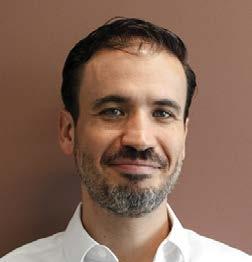
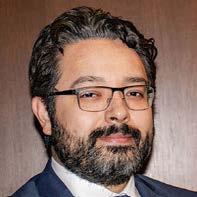













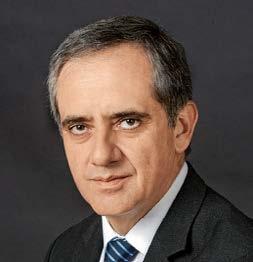



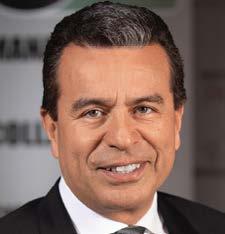
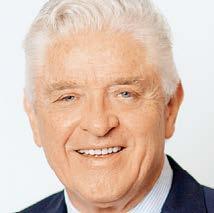

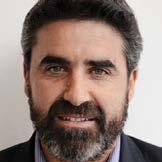
Mexico’s aerospace industry has experienced significant growth in recent years. However, the COVID-19 pandemic created challenges for the industry, including supply chain disruptions and reduced passenger traffic. Despite these challenges, Mexico’s aerospace industry remains a vital contributor to the country’s economy.
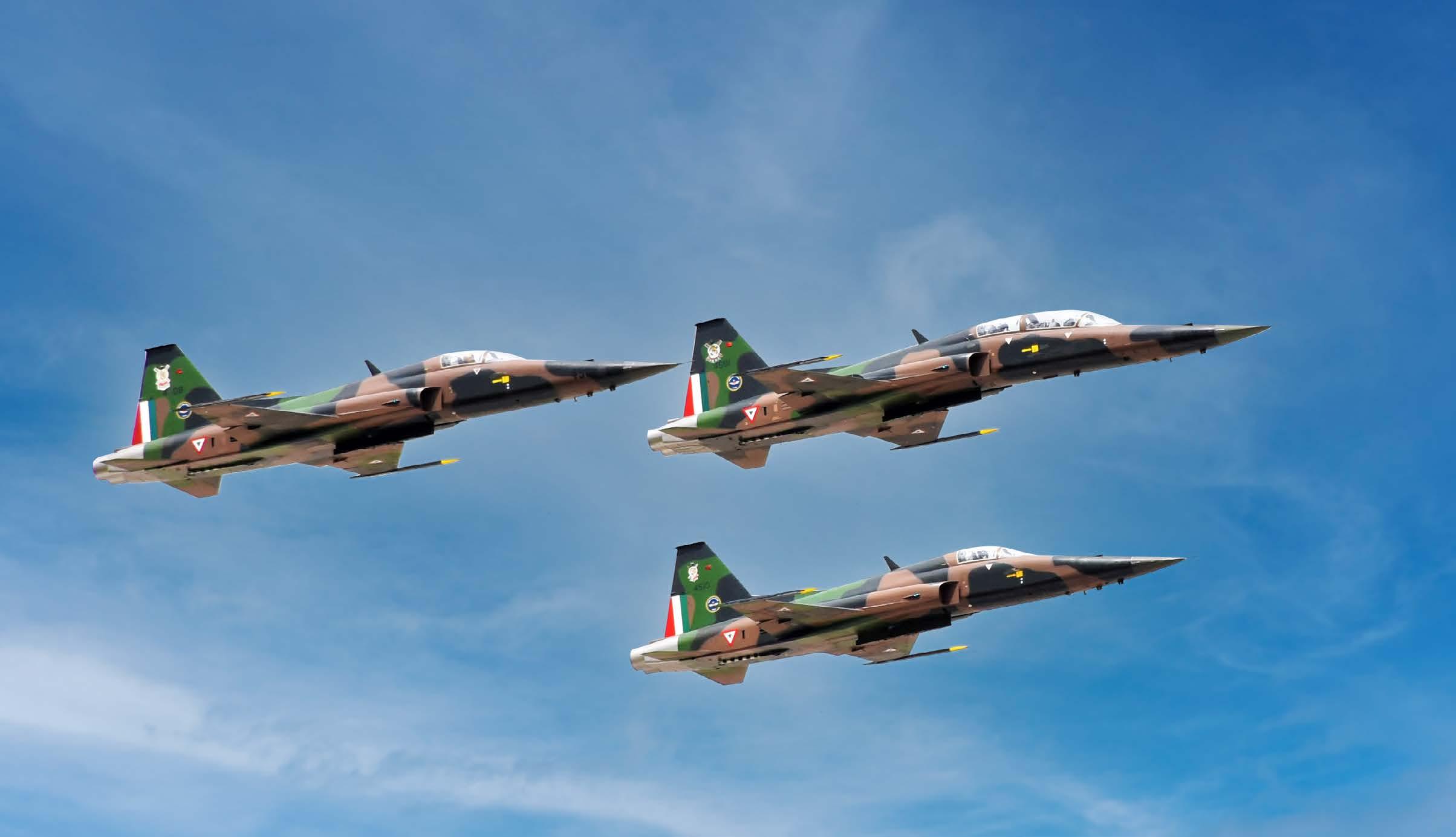
One of the major challenges the industry faces is the disruption of global supply chains. Many companies have struggled to obtain critical components, leading to delays in production and increased costs.
While the pandemic led to a significant decline in passenger traffic that hurt the bottom line of planemakers, many countries have lifted travel restrictions, allowing airlines to fly again and resume their orders for new aircraft. Thus, demand is expected to pick up again for the aerospace industry but companies are also looking to optimize their supply chain to avoid further disruptions. This shift is leading companies to manufacture closer to their main markets, putting Mexico in an advantageous position.
In this chapter, front-runners of the most influential organizations in the sector analyze the changes affecting the aviation and aerospace industries and their short, middle and longterm effects. This chapter looks at the role that OEMs, suppliers and the government will play in transforming Mexico into a powerhouse.

The aerospace industry has expanded its footprint across the country and is growing exports yearly. However, growth stopped due to the COVID-19 pandemic in 2020, when the sector saw a 31.8% drop in exports. While 2021 brought a slight recovery to industrial aerospace operations in Mexico, it was in 2022 that the sector saw a greater recovery, which was also pushed by aviation growth and nearshoring trends, in which Mexico is positioned as an ideal destination for establishing operations.
From 2010 to 2019, Mexico’s aerospace sector achieved an average annual growth of 15%. Mexico’s aerospace sector was the fastest-growing industry during this period. In 2020, the pandemic brought annual exports down from US$9.68 billion to US$6.6 billion and in 2021 the situation only improved by 2.3%, according to FEMIA. In 2022, the sector is expected to have grown by 18% in comparison to 2021, with revenues surpassing US$8 billion.
The recovery of the industry is expected to continue in 2023, when FEMIA estimates that it will grow by 16%. By 2025, the Mexican aerospace sector will be stabilized, with export levels above US$12 billion.
Currently, Mexico ranks 12th as an exporter of aerospace components to the US. This figure, as well as overall export revenues, could grow if the sector continues to specialize in more specific processes, which offer an added-value beyond traditional maquila operations. About 79% of aerospace companies are dedicated to maquila, 11% to engine repair and construction and 10% to engineering and R&D operations.
The introduction of highly specialized processes and specific services contribute to the generation of a highly-developed manufacturing ecosystem that can enter the market for higher value-added parts, Humberto Ramos, CEO, HT-MX, told MBN. “Through advanced processes, companies in Mexico can access a larger and more complete supplier base and transfer more complex operations to the country, helping the local industry to put maquila operations behind it in favor of more advanced manufacturing processes.”
While the pandemic negatively impacted all industries in Mexico, including aerospace, it has also opened opportunities for the country. The pandemic, the Ukraine-Russia war and further logistics constraints exposed the failures of globalization, favoring nearshoring, which aims to bring production closer to the end market, thus shortening the supply chain and easing logistics.
It is here where Mexico is able to leverage several factors in its favor, including distance and time zones aligned with the US, which enable more affordable transportation costs and faster delivery times. The country also provides an experienced manufacturing industry, renowned for its high quality standards, cost-effectiveness and a highly trained workforce. While the
aerospace sector in Mexico grows in reputation and experience, overall manufacturing activities in the country contribute about US$221 billion to the economy annually, making up 18% of national GDP.
“Reshoring and nearshoring trends represent a unique opportunity for Mexico. The country is in the right place but needs to engage with the right actors, people, companies and authorities. Everything must be aligned toward the same objectives,” says Óscar Rodríguez, CEO, Optimen and President, BJXAerospace.
The International Air Transport Association (IATA) expected the global aviation industry to return to profitability in 2023 as carriers cut losses throughout 2022. However, profits will remain within a tight margin (0.6%), as airlines are expected to post a total profit of US$4.7 billion by 2023. It will be the first profitable year since 2019, when the sector posted net profits of US$26.4 billion (3.1% net profit margin). In 2022, global airline net losses amounted to about US$6.9 billion, a major improvement following 2021’s US$42 billion in losses and 2020’s US$137.7 billion in losses.
Mexican aviation also faced a complex year in 2022, with the three major airlines (Aeroméxico, Viva Aerobus and Volaris) cutting losses and preparing for 2023 amid several challenges, from the country’s continued efforts to obtain a US Federal Aviation Administration’s (FAA) reclassification as Category 1 airspace, to the inauguration of Felipe Angeles International Airport (AIFA) in March 2022.
According to Jorge Nuño Lara, Minister of Infrastructure, Communications and Transportation (SICT), Mexico will recover Category 1 by the summer of 2023 through the strengthening of the country’s airport system, which will provide better services for passengers, while promoting tourism and boosting the economy, as reported by MBN. While the downgrade to Category 2 allows Mexican airlines to continue operating their current routes to the US, they are prevented from opening new ones.
Amid controversy, AIFA began operations in March 2022. While it continues to struggle to attract air traffic, it is slowly progressing toward decongesting air traffic in the metropolitan area of Mexico City, alongside with Mexico City’s International Airport (AICM) and Toluca International Airport (AIT), the latter of which restarted flight operations in July 2022. From its inauguration in March 2022 until Oct. 19, 2022, AIFA operated over 4,641 flights, mobilizing over 415,000 passengers, reported MBN. In the first two months of 2023, AIFA transported about 351,900 passengers.
AIFA’s administration has implemented new strategies that have allowed the airport to increase its number of daily activities, says Gen. Isidoro Pastor, Director, AIFA, and both airlines and passengers are satisfied with the airport so far.
“As far as the airlines are concerned, there has been no issue of nonconformity or adaptation. It is a space that makes them happy and allows them to develop operations for passengers and baggage documentation. If there is one thing passengers are satisfied with, it is security and waiting times,” he told MBN.
 Advisor and CoFounder | Innocentro
Advisor and CoFounder | Innocentro
The previous year, 2022, was an inflation and interest rates roller coaster. 2023 definitely seems to be similar. The more expensive bank loans and credit becomes, there is a bigger risk of a slowing economy in the coming months. Even with all predictions aside, the US is expected to slow down in a potentially harder than soft landing, with the real estate industry forcing a harder fall than the 2008 crisis. Also to be taken into consideration is the illegal invasion of Ukraine by Russia, which has seen its economy semi-demolished, with record low foreign investment and record unemployment.
As far as prices are concerned, almost all commodities have risen by about 30% and, in some cases, even up to 70%. For the travel industry, a year of recovery on the tourism side, the industry is cautious, waiting to see if the new COVID-19 variants will spike back up now that China has entirely opened its borders after three years of lockdown. The “Zero COVID” policy kept China’s economy from getting back on track. Trade tariffs applied by the previous US administration continue to this day, and reshoring, called “nearshoring” here, is heating up. However, while this relocation of overseas companies looking away from China has Mexico well-placed to take advantage, our country lacks enough green energy reserves to relocate the billions of dollars in value these companies have established in China.
The Mexican economy benefits from Mexican nationals who immigrated to the US and who have sent a record 21% YoY more money back to their families in Mexico, greatly helping family economics in the poorest communities. We have one of the best opportunities on the planet when it comes to foreign investment, given our relationship with the US and Canada. Exports surpass imports. Negotiations are underway in terms of food security, border control and the drug war. Most of all, energy trade is now the most important topic. Fiscal reform does not seem like a priority in the next two years despite federal tax collection hitting records in the last four years. The goal is to make it sustainable.
Overall, for the aerospace industry, 2022 was a year for recovery, with traffic back to 2019 levels, pushing passenger and cargo demand to new levels, causing a spike in MRO, retrofitting and makeover work despite a labor shortage. This is forcing even more companies to go digital. Maintaining an efficient, lower cost operation has greatly benefited carriers like Aeromexico, Viva Aerobus and Volaris. The increase in demand for new aircraft has recently also put Boeing and Airbus, the world’s largest OEM aircraft makers, in a better position than the last decade as the economy rises to pre-COVID-19 levels. Companies are looking to expand their operations in Mexico if the current scenario holds, given the upcoming demand for aircraft worldwide. Baja California, Chihuahua, Nuevo Leon and Queretaro are the main hubs for aerospace and newcomer states like Sonora, Yucatan and Guanajuato are making big bets on investment in talent and infrastructure to compete and further integrate the industry.
At the same time, the automotive and agriculture industries will grow but will also require new, qualified talent. If the trend continues, we may be able to overcome most of the lockdown controls entirely and enter the endemic phase of COVID-19 at last in 2023. Many challenges lie ahead but Mexico is well positioned to make this year a very good one if the current economic scenario remains similar to 2022.
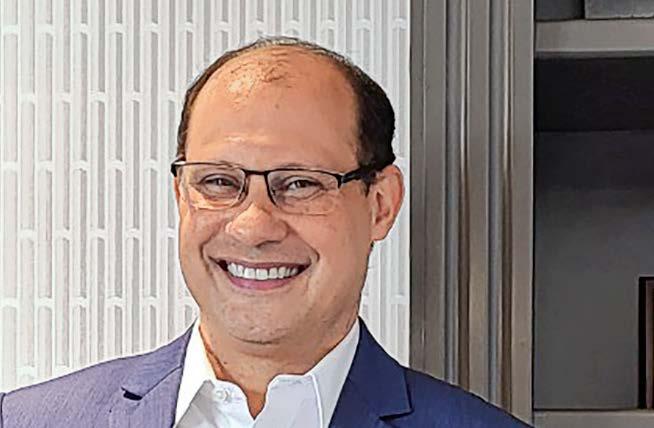
In September 2022, Latin America and the Caribbean reached the same number of passengers carried in 2019 for the first time and even exceeded that mark by 1.2%, becoming the first region in the world to achieve this post-pandemic recovery milestone. North America reached 96% and Europe 86%, compared with September 2019. The recovery in Africa, the Middle East, and Southeast Asia was also below 2019 levels, with Southeast Asia seeing the slowest recovery at 75%.
In terms of RPK (revenue passenger per kilometer), the region continued to lead the recovery worldwide, despite not reaching 2019 levels, although it was very close to hitting it, with 97.4%. Not surprisingly, passengers have recovered faster than RPKs. This is because many travelers prefer domestic or short-haul flights to long-haul or transatlantic flights. North America and the Middle East follow with 92%. Southeast Asia was at 65% of its 2019 levels. Also, it is observed that almost all countries in the world are reducing passenger traffic to the US, except for the LAC region.
Over 300,000 additional passengers versus September 2019 were carried in Latin America and the Caribbean, setting a particularly decisive milestone, as it is the only region where air transport did not receive economic relief during the pandemic.
In 2020 and part of 2021, some countries did take measures, such as temporary tax reductions and postponement of payment dates for some fees, but there were no loans or public investments to support an essential service such as aviation. Millions of people were repatriated by air and vital supplies, including vaccines, were transported to meet the urgent needs resulting from the health emergency. The supply distribution chain remained active and all the essential cargo was carried for the population when other industries stopped working.
Aviation was there for the population. The operators managed with great effort to keep the service going and, now that people are traveling again, either for tourism or business, it is evident that air transport is a necessity in the region and not a luxury.
Therefore, ALTA constantly speaks of state agendas. That is, collaborative work strategies in the nations of the region that include the travel and tourism industry as an important economic sector, a fundamental contributor in creating jobs, income, and development for the population. It is a service that contributes to the social and economic dynamics of the countries and that, therefore, should have a collaborative work plan between the public and private sectors to generate efficiencies, optimize regulations and continue allowing access to more and more people to the safest and most efficient means of transport.
Making air transport part of a state agenda means it transcends governments and becomes a priority for public servers. Aviation activates an extensive value chain that, in addition to creating millions of direct jobs, also creates millions of indirect and induced jobs, from the driver who picks up the passenger at the airport to those related to hotels, meals, and attractions, among many others.
At the technical level, opportunities have been identified and discussed to improve the region’s competitiveness for air transport.
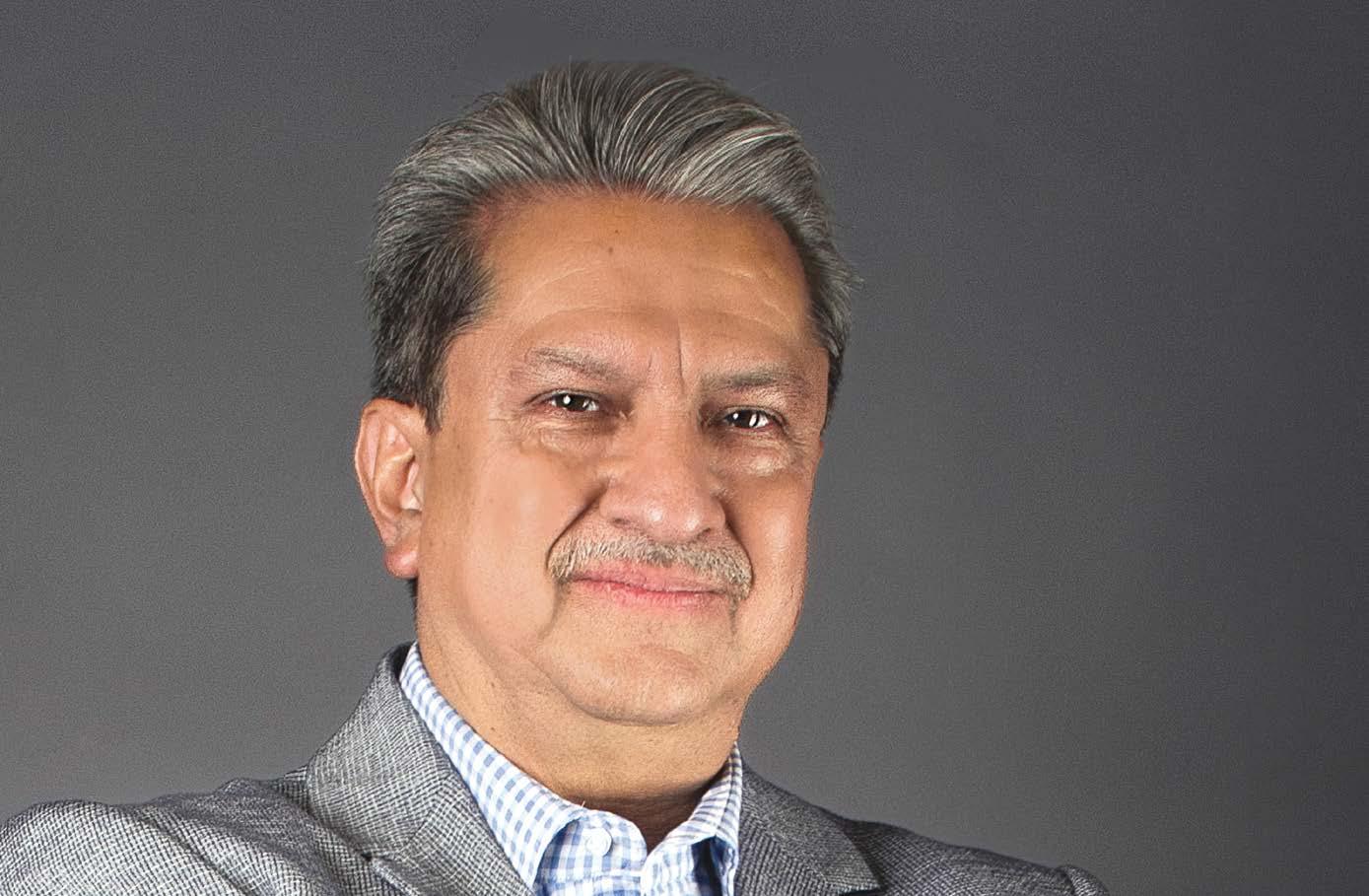
The Mexican aeronautical authority (AFAC) is making a great effort to recover the Category 1 (Cat. 1) status on the International Aviation Safety Assessment (IASA) program, audited by the US Federal Aviation Administration (FAA). Some of the findings are related to changes in regulations and others to required investment, specifically in personnel. There is no question that eventually Mexico will “pass” and recover Cat. 1 but let us look at one issue that is difficult to comply with: the knowledge of personnel. For this purpose, I refer to knowledge as those capabilities and skills needed to make high-level decisions, correctly apply criteria and having a background of information that allows you to go further than just follow a checklist.
Besides Cat. 1 recovery, the knowledge required of AFAC personnel who make rules, audit and oversee operations in our country is far beyond that obtained through some training courses or the fact of having “some” professional experience.To correctly carry out AFAC’s responsibilities requires a full understanding of rules and also of the reasons why they were issued. There are scenarios where someone appears to be complying with the rules but, in fact, they are creating the risk of an accident. Also, this knowledge implies that ability to figure out real situations and not just what is shown in an audit environment. An experienced auditor can identify half truths or lies.
There is no doubt that AFAC has a number of personnel who have this knowledge, but there is also a large group of them who do not. The question is, how will AFAC acquire this knowledge? We can look to the US and European Union aeronautical authorities as good examples. They have few people in relation to their fleet size, but those people are well prepared, very skilled, with a great deal of experience in the organization’s operation and with high salaries. How do they manage large fleets? With the help of a group of people with the same characteristics but who do not work within the authority itself. They are individuals or companies that are “designated.”
In the US, for example, there are Designated Airworthiness Representatives (DARs) that perform inspections, issue Airworthiness Certificates and conduct other activities on behalf of the FAA. There are also Designated Engineering Representatives (DERs) that process Supplemental Type Certificates (STC), modifications and others, also on behalf of the FAA. The FAA may appoint as many DARs and DERs as needed and where required. It is not easy to get such a designation. The aforementioned knowledge must be fully demonstrated as well as an honest professional trajectory.
DAR or DER services are not cheap but they earn every penny. Certainly, operators can go directly to the FAA for these documents but due to the limited resources, it would take a long time. Designation from the FAA also does not mean a blank check. There is close oversight of designees to prevent mistakes or corruption. Constant training and updating on new, clarified or changed rules also avoid misunderstandings. To keep a designation is not easy.
It may not be the perfect solution, but it has worked well for the US and Europe for many years. Can it be applied in Mexico?, I think so, although the law would require changes to implement similar figures.
 General Manager | Querétaro International Airport
General Manager | Querétaro International Airport
The project to create the Strategic Plan for the Development of the Queretaro International Airport to 2035 is, by itself, a challenge, both methodologically and in terms of reconciling wills. Its usefulness will lie both in the strength of its proposal and in engaging the right team and stakeholders. There are factors that can increase the chances that an exercise like this is executed correctly:
The project team.
Inside the Queretaro International Airport (AIQ), the project team that will be working on the creation of the strategic plan has to be multidisciplinary, led by the strategic planning department. The project will be composed of leaders from all areas: air operations, human resources, finance, information technology and legal, just to mention a few. The team’s sponsor is the general manager. The nature of the strategic plan is that it must include the deployment of coordinated actions from all departments at the right timing in order to achieve the proposed goals.
Support from world-class experts.
The support from world-class experts with experience in the creation of this type of strategic plan at other airports around the world provides the confidence that the necessary elements to make it feasible will be considered. The experts’ participation will also speed up the document’s construction.
The stakeholders.
Involving and taking note of the needs, opinions and perspectives of the right stakeholders is perhaps the factor that gives the strategic plan its greatest certainty. Among the most relevant stakeholders are the government of the state of Queretaro, airlines, courier and cargo service companies, users of cargo services, such as associations of auto parts producers, passengers and the aeronautical authority in Mexico. These should all participate in well-targeted and concrete consultation exercises.
Analysis of successful models around the world.
The analysis of the commercial and operational models of similar airports around the world is an essential condition to incorporate world-class practices into AIQ’s vision of the future. Talking with the leaders of these airports will provide a clear idea of the opportunities that exist and are already a reality in other parts of the world, which include technological trends, sustainability, operational and commercial practices as well as the passenger experience.
Industry studies.
The last key factor to consider in the process of creating the strategic plan is, without a doubt, the analysis of industry studies of air operations in the region and the world. From there, trends in air operations, fleet growth forecasts, needs for new routes and business opportunities, among others, will be incorporated.
In the case of Queretaro, it is important to analyze the opportunities and threats that exist due to the cancellation of the construction of the Texcoco Airport and the creation of the new Felipe Ángeles International Airport in the context of the national airport system.
 Ricardo Dueñas CEO | Grupo OMA
Jorge Gutiérrez de Velasco General Manager | AIQ
Mauricio Arellano Villavicencio Director of the Fuels Division | ASA
Coronel Alain Solana Operations Deputy General Manager | AIFA
Ricardo Dueñas CEO | Grupo OMA
Jorge Gutiérrez de Velasco General Manager | AIQ
Mauricio Arellano Villavicencio Director of the Fuels Division | ASA
Coronel Alain Solana Operations Deputy General Manager | AIFA
For the past two years, Mexico’s aerospace and aviation sectors have focused on recovering activity flows and economic stability after the COVID-19 pandemic. Now, the industry has shifted its goals and is also striving to advance its sustainability plans and improve passenger experience to continue to be among the main means of transportation for both passengers and cargo. Airlines and airports are two of the main pillars on which the development of the Mexican aerospace industry hinges.
The sustained efforts on traffic recovery have also highlighted new industry trends regarding passenger behavior. “We used to have 23 million passengers regarding domestic and business traffic and, while the first segment is back up, the second has taken the longest to recover,” says Ricardo Dueñas, Director General, Grupo OMA.
“Trips to visit family and friends and tourism travel have been the fastest areas to recover. We saw the first indicators in 2020 but industrial business flights did not take off until 2022. Just recently, Grupo OMA experienced 90% growth in these types of flights, but this occurred two years after the COVID-19 outbreak,” says Dueñas.
Hygiene measures and airport practices regarding in-person contact between clients and staff have also changed, leading to the adoption of measures that best fit passenger needs, Dueñas says. These measures also respond to the sector’s long-time goal to increase air travel in Mexico, an objective that has been greatly advanced by the country’s ultra-low-cost airlines. These airlines have dramatically boosted local tourism to the point that they are now being recognized internationally for their achievements in the sector. “As Mexico’s middle class grows and the population pyramid has more people old enough to travel, these passenger flows are expected to grow. And so will airport capacity,” says Dueñas.
The increase in traffic is heightening pressure on the already saturated Mexico City International Airport (AICM). This airport’s saturation was one of the main reasons behind the construction of Mexico City’s new airport: Felipe Ángeles International Airport (AIFA). While new, AIFA “is trying to work jointly with airlines through incentives that keep fares low and increase airport accessibility,” says Col. Alain Solana, Operations Deputy General Manager, AIFA. To avoid traffic disruptions, AIFA aims to offer appropriate domestic connections that reduce travel time and provide greater security to operators.
To achieve the right operation and management, investment is fundamental. “Grupo OMA, for example, is investing to decentralize traffic and make the airport in Monterrey a hub to avoid forced layovers in the center of the country,” Dueñas says.
The National Metrology Center (CENAM) has been implementing a metropolitan airspace modernization project that aims to improve the area’s operation capabilities by 50%. “For airports like Queretaro Intercontinental Airport (AIQ), this measure aims to increase their capacity from 32 flights per hour to 48 per hour,” says Jorge Gutiérrez de Velasco, Director General, AIQ.
Improving traffic will also require investing in novel industry trends such as ambulatory flights, special airport wings for lowcost airlines and the adoption of tech to have less interaction between passengers and airport staff and to provide a more direct travel experience. From an infrastructure perspective, investment in runways, platforms and pavement for the new generation of aircraft are among the top priorities.
Air cargo is another significant attractor of investment and cooperation between airlines and airports. “The COVID-19 pandemic drastically shifted freight traffic. E-commerce became a main source of product acquisition and this changed supply chains,” says Gutiérrez. AIQ saw its best year for cargo in 2021 and this year, the airport has been growing for five months in a row.
But growth and reconfiguration also implies securing fuel sources. The fuel provider of choice in Mexico is the Network of Airports and Auxiliary Services (ASA Network), which is prioritizing five of the large airports in its network. These include Puebla, where cargo in 2022 experienced 280% growth compared to the same period last year. Puerto Escondido, Tepic, Colima and Ciudad del Carmen are also working to improve aircraft processing capacity.
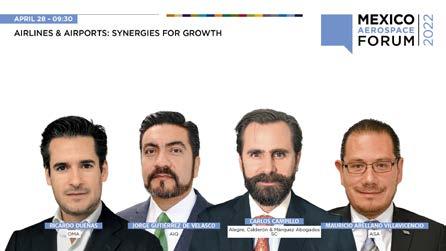
ASA is working with Grupo OMA, AIFA and AIQ to review their fuel systems. “With OMA, we are looking to extend the hydrant network for a better volume capacity in the airport in Monterrey. AIQ has grown significantly so we have to improve its fuel storage capacity,” says Mauricio Arellano Villavicencio, Director of the Fuels Division, ASA. The growth of these airports has driven ASA to acquire fuel supply vehicles to align with airport requirements and the operational reality of the country.
A common concern for all airports in the country is sustainability but newer airports like AIFA have an advantage as they were built with clean energy in mind. “We have solar farms and cogeneration plants that reduce emissions,” says Solana. AIQ is also investing in sustainability and aims to reduce its carbon footprint through solar energy farms and wind energy. “The long-term vision of AIQ is to always coexist with the environment,” says Gutiérrez.
Both airports and airlines have to align their needs and processes to respond correctly to changes in the industry. “The big task we have as an industry is to democratize flights. Mexico has one of the most sophisticated fleets of luxury buses in the world, which has inhibited the penetration of our services,” says Carlos Campillo, Partner at Alegre, Calderón & Márquez Abogados SC. However, “if the aviation industry continues to excel in passenger experience and operational management, we could continue strengthening the aviation industry.”
After four decades flying in Mexico, the US and Cuba, Aeromar announced the termination of all its air operations, as it struggles to pay its debt and workforce. The airline informed it was terminating operations on Feb. 15, 2023, for all its routes following a series of financial problems. While the airline had deployed measures to salvage its finances, including constant efforts to close deals for the long-term function of the company, they were not sufficient.
Aeromar began operations on Nov. 7, 1987, with a flight from Toluca, State of Mexico, to Acapulco, Guerrero. The airline had a four-decade legacy in the Mexican, US and Cuban air space. Aeromar covered 21 destinations in Mexico and three international routes, as the company was committed to regional connectivity and operational security, explained Aeromar via a press release.
The airline struggled with numerous financial problems that were deemed unsolvable, despite Aeromar undertaking constant efforts to close agreements that would allow the company to carry out operations in the long term. The COVID-19 pandemic laid a major blow and the profound financial adjustments that it undertook were not enough to improve the situation, says the company.
Aeromar’s website continues listing flights to Piedras Negras, Ciudad Victoria, Aguascalientes, Tepic, Guadalajara, Puerto Vallarta, Colima, Ixtapa Zihuatanejo, Mexico City, Acapulco, Ixtepec, Villahermosa and Cancun. It also lists flights to McAllen, the US, and Habana, Cuba.
Aeromar said that it poured efforts into helping its more than 700 workers, arguing that base salaries for 2022 were fully compensated before it ceased operations. However, the airline explained that there are still remunerations to be paid for most of its labor force. The company says that the Ministry of Labor is aware of the situation.
Mexico’s Union Association of Aviation Pilots (ASPA) argued via a press release that it had warned authorities of Aeromar’s financial mismanagement and corporate disinterest for months, and blamed the airline for the loss of more than 700 jobs. ASPA highlighted that workers are highly specialized and asked President Andrés Manuel López Obrador and all government agencies involved to support the company’s workforce. The association said that Aeromar’s debt with its pilots totals MX$100 million (US$5.5 million).
Aeroméxico, Volaris and Viva Aerobus have offered help for all passengers affected by Aeromar’s recent closure. The airlines will allow passengers to travel by presenting official identification and their original Aeromar reservation. “We appreciate the solidarity of our colleagues from Aeroméxico, Viva Aerobus and Volaris for providing support to travelers who have a valid reservation with us. It is a sign of the collaboration that distinguishes the union for keeping air service users connected,” says Aeromar via a press release.
Q: Currently, the aerospace industry in Mexico generates 3.05% of the country’s GDP. How is CANAERO working to increase that percentage?
A: In 2019, the aviation industry contributed US$65 billion to GDP, or 3.05%, and generated over 1 million jobs. In that year, the Mexican market was close to breaking the record of 100 million passengers, making it one of the most important markets in Latin America. The airports in Cancun and Mexico City had the highest connectivity in the region, surpassing those in Sao Paulo and Rio de Janeiro. Airlines were also renewing their fleets, and there was an expansion to boost connectivity in the country. Mexico also offered MRO services. In Queretaro, for example, Delta Air Lines and Aeroméxico opened MROs hangars. The country also built cargo hubs and clusters in the north of the country.
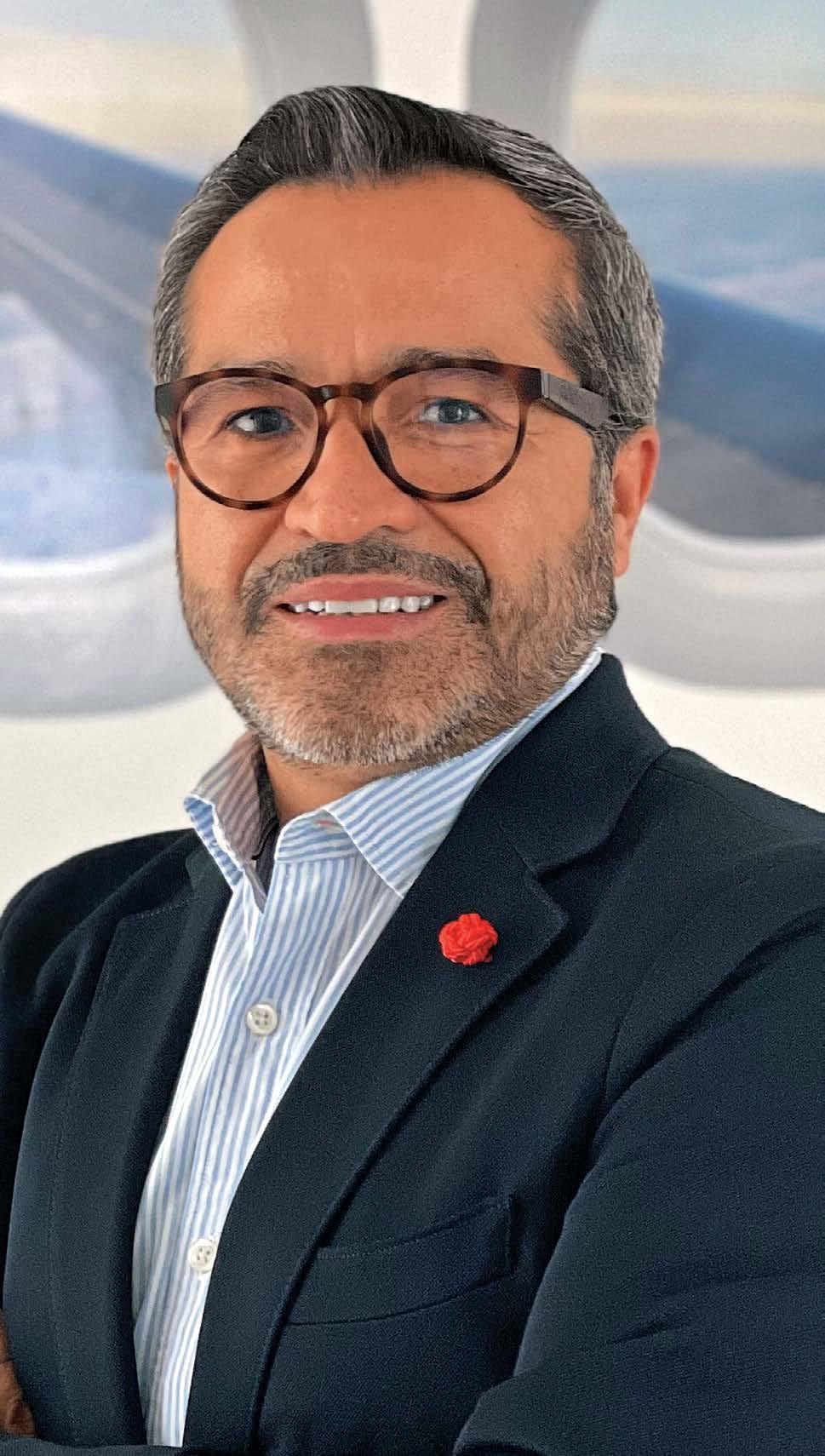
In 2020, the aviation industry suffered its worst crisis in history, with global airline traffic dropping by 9%. Neither 9/11 nor the 2008 financial crisis affected the industry at the same level. In 2020, we had about 7,000 aircraft grounded, and we did not have enough space for them. Many countries closed their borders, and the industry lost an estimated US$250 billion. This led the aviation industry to restructure. Some airlines had to stop flying, others transformed their business models, and others entered a financial restructuring. We forecast a global industry recovery by 2024.
Mexico was not exempt from the impact of this crisis, but local decisions benefited the local industry. Mexico never closed its borders and foreign airlines saw this as an opportunity to maintain operations, accelerating the recovery of the industry during the summer of 2020. Mexico has a solid domestic market, and this period strengthened its international market. The US and Canada and some Central American countries started to allow traffic to Mexico, allowing the country to position itself in the international market,
Q: What impact did the collaboration with IATA have during this period and where is this partnership heading?
A: We were experiencing difficult times and we had to become more cost-efficient. In 2020, Mexican airlines were forecasted to lose US$9.5 billion in revenue. Meanwhile, the metropolitan airport system was undergoing changes and Mexico’s airspace was being revamped following the construction of Felipe Ángeles International Airport (AIFA) at the Santa Lucía military base. The agreement with IATA, signed in July 2020, came at a time when we had to generate a solid team. The agreement brought expertise and knowledge to CANAERO of what was working globally, creating a more solid and efficient organization. CANAERO’s board of directors also underwent changes and implemented a different vision based on international experience. We also presented the authorities with what was working internationally and implemented COVID-19 tests at airports and generated global COVID-19 databases and lists of other countries’ requirements for passengers. These efforts strengthened CANAERO. Our goal is to help the market recover and become more efficient. The agreement was initially signed for 18 months but was renewed this year for a similar period.
The most critical stage of the pandemic is behind us. We are now focusing on relevant topics for the post-pandemic era, such as the development of the metropolitan airport system, security and the
Cuitláhuac Gutiérrez Former Country Manager | CANAEROredesign of our airspace. Operations in the Valley of Mexico are also in the spotlight. We are working to prevent over-regulatory changes intended to benefit passengers, but in the end, any overregulation will lead to a market effect potentially reflected in cost; we are in the moment to give options to the passengers according with their travel expectations. We are actively participating in the recategorization of Mexico’s airspace with the US Federal Aviation Administration (FAA); this factor is key for the Mexican airlines’ growth and the Mexican economy,
Q: What is CANAERO doing to improve the use of AIFA?
A: It is always better to have a single airport able to receive more operations and generate more jobs and connectivity than several. We expressed our position regarding the cancellation of Texcoco’s airport project but afterward, we supported the airport metropolitan system, which includes Toluca International Airport (AIT), Mexico City International Airport (AICM) and AIFA.
The CANAERO and IATA teams are working to make the system feasible. What is not in our hands is demand; passengers generate that. Starting in September, domestic airlines will begin increasing their capacity at AIFA and we will start to see more flights. It is necessary to define the role of each of the airports in the metropolitan airport system, as is the case in foreign countries. We need to define the system because we cannot have three airports providing the same services because they are going to compete with each other.
For the time being, AICM will continue to be the main one due to its geographical location, demand and its connectivity. There is much to be done at this airport, and we are working with authorities to help it to operate efficiently. We are working to determine the real capacity of its terminals and airlines, which will help us to develop the alternate airports in the system.
AIT is emerging again thanks to the operations of Volaris and VivaAerobus. The challenge will continue to be AIFA. We will have to create connectivity, generate a market and create efficient road access to the airport. Infrastructure will be the main challenge for domestic airlines, AIFA as a bet because they are losing money today. It is essential to have a support plan with the federal government regarding infrastructure and incentives. As this happens, we will seek to mitigate the financial impact.
A: We have to work on regaining the lost Category 1 for our airspace. The country was downgraded to Category 2 by the US, so national airlines cannot increase their offering to the US, which represents 70% of Mexico’s international market. Domestic airlines have missed the opportunity to capitalize on a growth of 15-18% of the market share. US airlines continue to open routes in Mexico, but national airlines are falling behind. On average, we have about 70 passengers and cargo aircraft that cannot fly to the US today. CANAERO is insisting on the urgency of this issue, which represents an opportunity to generate value. The country is losing revenue and we are missing an opportunity to develop at this critical time for the industry. We are fully supporting our authorities with whatever we can; it is a process between both countries, but we are supporting the authorities to create the conditions that allow us to return to Category 1 as soon as possible.

Q: What are your expectations regarding passenger flows, and what are the strategies to further advance passenger and cargo acquisition?
A: We are implementing new strategies that will allow us to increase our number of daily activities. We have forecasted an increase from 12 to 64 daily flights by September. This means going from 1,200 to 6,500 daily passengers at the Felipe Ángeles International Airport (AIFA). On July 15, air operations grew with the addition of a flight to Cancun by Viva Aerobus. If we continue this trend, we will reach 100 daily operations by the end of next year. The opening method of the Felipe Ángeles International Airport is known in the aeronautical field as soft open or gradual opening, which allows the airport capacities to be in accordance with the development of air operations. Considering risk management and operational safety at all times.
In terms of international cargo, by September, we will be able to handle 470,000 tons of cargo per year, which is the installed capacity in our 12 bonded warehouses. The growth of air cargo operations is uncertain because it also relies on the activities taken by the Mexico City International Airport (AICM).
Q: How will both airlines and passengers adapt to this new system?
A: As far as the airlines are concerned, there has been no issue of nonconformity or adaptation. It is a space that makes them happy and allows them to develop operations for passengers and baggage documentation. If there is one thing passengers are satisfied with, it is security and waiting times.
Passenger satisfaction is at 83%, safety is between 97-100%, and satisfaction with cleanliness and waiting times is at 95%. The tools we used to measure passenger satisfaction data were subjected to a reliability test taken as a reference to the other international airports. In this sense, we do not doubt that both airlines and passengers are more than satisfied with the services being provided by AIFA. In addition, we have received dozens of visits from educational institutions, business people, and the airline industry. None of them have left with a wrong perception. What has happened is that some media distorted the image of daily life at AIFA because they came with a predisposition. In reality, they leave with a good taste in their mouth.
Q: What are the main benefits AIFA offers to airlines?
A: Before AIFA began operations, we had to review the airport’s tariffs scheme, which also had to be approved by the Board of Directors and the Airport Schedules Operation Committee, a collegiate body composed of airlines and service providers. Later, the authorities reviewed the tariffs and registered them with the Federal Agency of Civil Aviation (AFAC).
AIFA’s tariffs are 13-14% lower than AICM’s, including direct flying services and warehouse and office rentals. Furthermore, AIFA’s fee for national flights is 54%lower than AICM’s, while the price for international flights is 50% lower.
Q: What role does AIFA play in the recovery of the aerospace and aviation sector?
Gen. Isidoro Pastor Director | AIFAA: Mexico’s airspace has not recovered the Federal Aviation Administration’s (FAA) Category 1 rank, which affects the entire country. AFAC is making an extraordinary effort to speed up the recovery of this category.
Demand in passenger and cargo aviation is already reaching prepandemic levels, and the industry is growing annually between 9-10%. There is not enough infrastructure in the Valley of Mexico to meet growing demand, so we are sure that additional clients will come to AIFA.
Q: How has AIFA innovated in airport infrastructure and technology? How will it become a beacon for investment in logistics and transportation?
A: We have developed technology that reduces check-in times for people and baggage, going from an average of 45-50 minutes to a 15-minute wait. One of the most prominent innovations is using biometric equipment to streamline the inspection of carryon luggage. We use tomographs that can measure the atomic weight of a substance to determine if it is dangerous, significantly speeding up revision.
Q: How will AIFA work with tourism players to encourage domestic travel?
A: We are creating an urban project surrounding the airport, properly planning and executing all economic, ecological, and safety matters. We are also working with AIFA’s surrounding neighborhoods to generate promotion for “pueblos mágicos”(magic towns), which are interesting nearby towns that have the traditional characteristics to make them appealing to tourists. In addition to traveling for pleasure or business, passengers can also invest their time in getting to know these tourist sites.
Q: What are the airport’s international priorities?
A: Until Mexico recovers the FAA Category 1 rank, we cannot grow our flights to the US, which is one of our critical routes. Airlines in the US are already working with us to develop routes to Chicago, Los Angeles, Houston, and some cities in Florida because they see a potential market of 5 million passengers. We have international flights to Panama, Venezuela, the Dominican Republic and Cuba and plan to open new routes to the EU and Asia in 2023.
Q: How is road infrastructure to connect the airport advancing, and what impact does that have on the attractiveness of the airport?
A: We have three pending projects. The main one is a highway that starts at the bifurcation between Circuito Exterior Mexiquense and the Mexico-Pachuca highway, which creates a direct 15-minute path to the airport without any toll booth. The second, which is taking place on the same highway, will use Mexibus to provide fast and inexpensive access to AIFA. Both projects will be finished by the end of 2022.
The third project involves the completion of an urban train connecting Buena Vista and the airport. The project involves over 23km of work.
Aerospace Industry Needs More Female Talent
09/03/2023
Passenger Traffic Continues to Recover to Pre-Pandemic Levels
16/03/2023
Barriers Limit Competitiveness of Mexico’s Jet Fuel Market
21/03/2023
World Faces Looming Pilot Shortage: OAG
06/03/2023
Boeing, Airbus to Hire Over 23,000 Workers in 2023
27/01/2023
Viva Aerobus Wins Low-Cost Airline of the Year Award
06/12/2022
Air Transport Competitiveness Index Places Mexico at the Top
25/11/2022
IATA Warns of Risks in the Aviation Sector Heading to 2023
26/09/2022
FAA Approves New Unleaded Aviation Fuel

05/09/2022
Versatility the Key to Staying Ahead
Beatriz Aguilar General Manager | Axon’ Interconex
Mexico has become a key player in the global aerospace industry thanks in part to the investments made by OEMs and Tier 1 and 2 suppliers, which have allowed the country to gradually build its supply chain. These investments have contributed significantly to the growth of the Mexican aerospace industry, making it competitive globally.
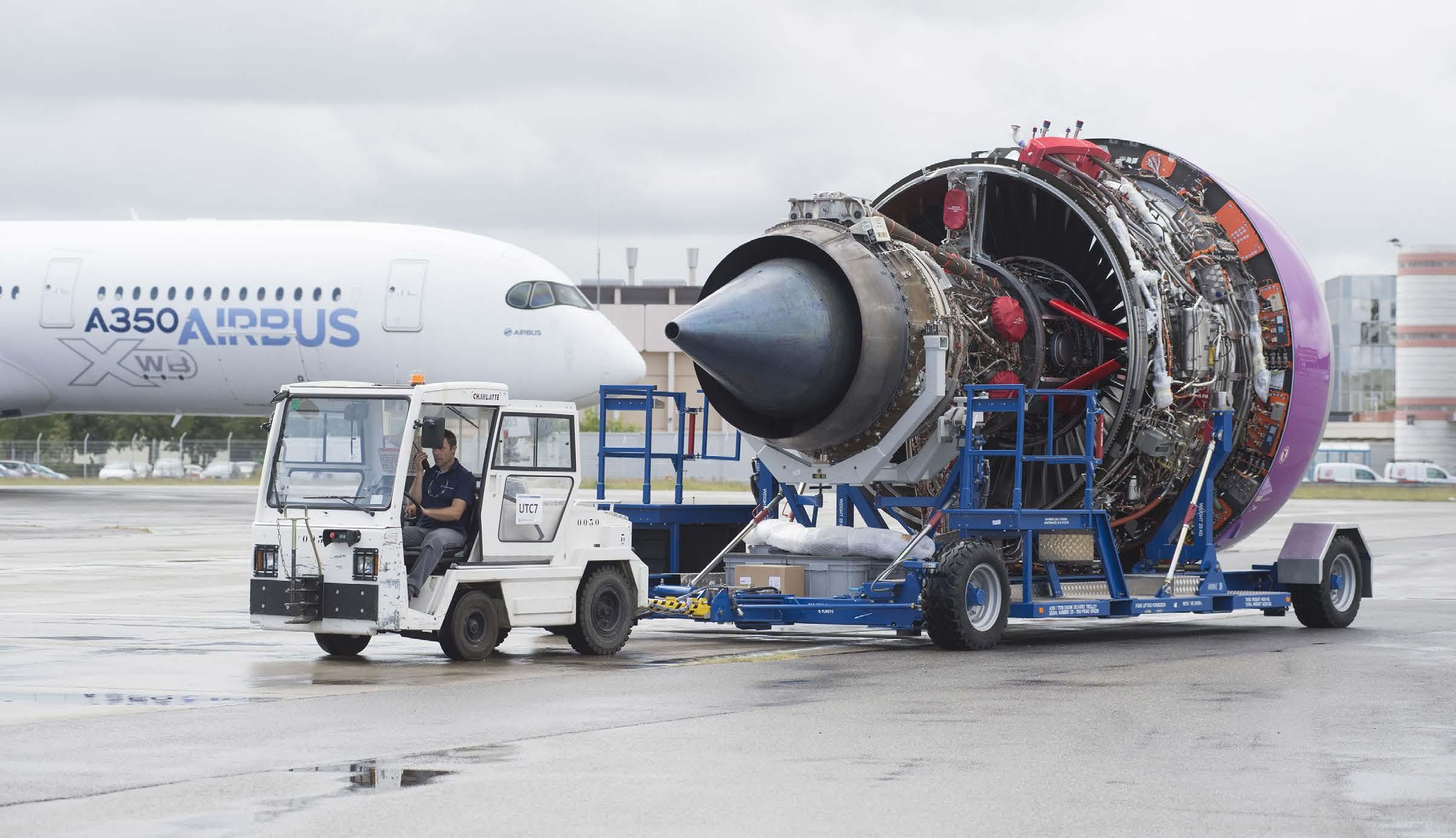
Investments made by major aerospace companies have created jobs and promoted economic development. These companies have also contributed to the development of local suppliers. In Mexico, these companies have found access to North and South American markets, plus a skilled workforce and competitive costs. But to continue expanding its capabilities, the country needs a stronger supplier base, specialized service providers and access to raw materials, among many other services. Furthermore, the sector needs the support of universities to train future aerospace professionals.
This chapter analyzes how major aerospace players are changing and how those changes are reshaping the entire industry. It also explores how the country is capitalizing on the relocation of supply chains and nearshoring to create new opportunities. The chapter also covers the role sustainability plays in the industry and the changes planemakers are making to adapt, such as adopting new materials and fuels.

In January 2023, Boeing delivered the last Boeing 747, marking the end of the jumbo jet era that revolutionized air travel five decades ago. Changing market dynamics, the COVID-19 pandemic and advances in aviation technology increasingly have rendered the jumbo jets less relevant, ultimately leading to their discontinuation.
The Boeing 747, affectionately known as the “Queen of the Skies,” first took flight in 1969. It was designed to meet the growing demand for air travel forecasted for the 1970s. With its distinctive hump and four engines, the 747 quickly became a symbol of luxury and prestige and was used by many airlines for long-haul routes. However, the rising cost of fuel and the advent of smaller, more fuel-efficient aircraft, such as the Boeing 777 and Airbus A350, have made the 747 less economically viable. The 747 was the first airplane known as a “jumbo jet” due to its wide-body design, as reported by MBN.
The 747 democratized global air travel in the 1970s, making it possible for the middle class to travel outside the EU or the US at an affordable price. However, the jumbo jet fell behind twin-engine passenger jets, which are today’s standard. While the retirement of these iconic aircraft marks the end of an era, it also reflects the changing nature of the aviation industry. The rise of low-cost carriers and the increasing popularity of point-to-point routes have led airlines to increasingly favor smaller, more fuel-efficient aircraft that offer greater flexibility and lower operating costs. Furthermore, advances in technology, such as the development of more efficient engines and the use of composite materials, have made it possible for smaller aircraft to achieve similar levels of range and capacity as their larger counterparts.
Over the past five decades, the Boeing 747 was used by many top airlines worldwide, with Japan Airlines being its largest operator, using 108 aircraft. British Airways was the second-largest client with 94 aircraft and Lufthansa was the second-largest operator in the EU with 81. In Mexico, several Boeing 747s have operated throughout the years, mainly to Mexico City, Guadalajara and Cancun. The first carrier to operate a 747 in Mexico was KLM, followed by British Airways, Lufthansa, Pan Am, Iberia, Japan Airlines and Air France. The 747 was also flown to Mexico through freighters, such as Atlas, Cargolux and Cathay Pacific.
After the COVID-19 pandemic, only a few airlines continue to operate the Boeing 747, including Air China, Korean Air and Lufthansa. The last 747 produced in history was delivered to Atlas Air on Jan. 31, 2023, as reported by MBN.
While the Boeing 747 and Airbus A380 will likely continue to fly for several years, they are past their prime and production has come to an end. As the aviation industry continues to innovate and evolve, planemakers and airlines are turning to newer, more efficient aircraft, such as the Boeing 777X and the Airbus A350. With the end of the jumbo jet era, the industry will be led by those players capable of using sustainable aviation fuels (SAF), hybrid or electric aircraft, which can significantly reduce emissions and operating costs. The end of this era represents a significant moment for commercial aviation, as it continues shifting toward new directions.
Q: What are Bombardier’s environmental, social, and governance (ESG) plans to adapt to current disruptions in the aerospace and aviation sectors?
AP: ESG plans are essential to us; we published our plan a few years ago and we update it every year. The current plan addresses 11 key areas and includes well-defined strategies, so everyone in Bombardier can follow every part of our services or processes. With ESG, we measure our success through results. For example, we are focusing on our environmental footprint, diversity and inclusion, compliance and customer satisfaction.
MD: Not only is sustainability important for Bombardier but it has become critical to the community surrounding the company. In Mexico, we see a great deal of participation from all employees, who appreciate that this is a priority for the corporation. In Mexico, prioritizing ESGs is part of the community’s values, which greatly helps advance these goals at a corporate level.


Q: How are projects like the company’s EcoJet research helping test the next generation of business aircraft?
AP: The EcoJet is a fantastic project and a platform for research. We are using it to focus on designing a new aircraft shape that will help us reduce aerodynamic drag. It has also been helpful in our research on Sustainable Aviation Fuels (SAF) and hybrid propulsion. We are increasingly seeking to use electrical systems on aircraft, including electrical propulsion. The existing technology capacity does not allow us to go fully electric yet, so we are working with our partners and testing the technology on the EcoJet to prepare the technology we want to use in our next aircraft programs.
MD: The advances are real. The aerospace sector, by nature, is very conservative, especially when it comes to metallic parts. However, we are seeing the evolution of Bombardier by introducing new technology and exploring new ways to do things.
Q: What has been the focus of Bombardier’s innovation efforts in recent years and how is this helping companies to reduce costs in a strained economic environment?
AP: For the past five years, most of our innovation has gone into improving passenger experience. The Global 7500 is a leader in the industry that includes seats, which revolutionized the seat market. For almost 50 years, the seats on the plane had remained the same and we developed a new mechanism that brings comfort to the passenger. A Global aircraft can travel for 10, 12 or 14 hours of flight, so when someone is traveling across the globe, they should be able to rest and arrive well-rested to their destination. Our competitor copied our aircraft lighting system, so we consider ourselves leaders in this as well.
We have also redesigned the cabin on the Global 7500, which will be called the Global 8000 and will be the longest business aircraft available, with three dedicated workspaces for corporate customers. We want to get our customers’ feedback and improve it. All of our innovation comes from listening to our customers and the constant need to innovate.
Aerospace original equipment manufacturers (OEMs) must strive to manufacture aircraft that can travel sustainably for longer distances and support net-zero goals. They must produce quality components with tight tolerances from difficult-to-machine materials like heat-resistant super alloys (HRSAs), while also keeping production cost-effective and errorfree — but how?
This is where digitalization and big data come into play. Combined digital and tooling solutions will be essential for errorfree production in tomorrow’s aircraft manufacturing industry. That includes Sandvik Coromant’s own CoroPlus Machining Insights, CoroPlus Tool Library and Silent Tools Plus process control solutions, which enable users to monitor their machining process and secure a successful output.
The aerospace industry faces unique manufacturing challenges. The complexity of the component shapes and structures, combined with the varying tolerances required for different components can make the production process demanding and costly. The nature of aerospace — and its strict quality assurance rules — also means that component production must be error-free. To optimize manufacturing, proper planning and preparation informed by accurate and reliable data is absolutely essential. To support aerospace OEMs, Sandvik Coromant offers several solutions to improve machining processes and to ensure quality and reliability of components.
An increasing number of industries are incorporating digital technologies into their manufacturing operations. Digital tools and the data that they can generate on key parameters can give a level of intuition and insight that traditional machining lacks. This is particularly key in heavily regulated industries, such as aerospace where accuracy and efficiency are crucial at every stage.
The Sandvik Coromant CoroPlus Tool Library is a web-based software that allows users to build and manage their tool library and tool assemblies from standard data on over 900,000 items from several cutting tool manufacturers. The library is cloudbased, allowing easy sharing of data and import into CAM and simulation software. Production and machine engineers and CAM programmers can easily create tool assemblies adapted for specific machining tasks or receive specialized recommendations for each application. The tooling data is verified by each supplier and is compatible with system environments meeting ISO 13399, the international standard for cutting tool data representation and exchange.
Using the CoroPlus Tool Library can save aerospace component manufacturers valuable time by removing the need to manually find and input tool data and reduce the margin for error involved in sourcing data from different systems. The centralized platform contains all essential standard data and minimizes risk, allowing manufacturers to get it right from the start.
Aerospace manufacturers can also improve their operations by using CoroPlus Connected with Silent Tools Plus. CoroPlus Connected enables process automation driven by data to increase efficiency and optimize output quality. This solution is particularly effective in complex processes, such as production

Efficient Aerospace Production When Failure Is not an Option
of jet engine components and landing gear, where visualization is difficult and operators may struggle to accurately see inside components due to their complicated structures or challenging materials.
Silent Tools Plus adaptors are equipped with sensors that can measure important parameters, such as height, temperature and load, and transmit this data automatically to the machine, minimizing tooling set-up and improving operator control when the tool is in cut.
Ensuring that tools are correctly set up and working to appropriate loads and measurements can effectively minimize downtime and wastage of resources. This is particularly important in the aerospace industry, where accuracy is key in preventing the need to scrap partly machined components in exotic, costly materials. Silent Tools Plus also supports safety and component security and increased cycle times, leading to overall productivity gains and protection of assets and output.
To improve operational efficiency and overall equipment effectiveness in complex aerospace manufacturing processes, reliable collection and analysis of data is essential. CoroPlus Machining Insights offers engineers and operators a centralized oversight of machine data, allowing them to visualize the process from start to finish. While manual data collection is slow and prone to error that aerospace engineers must avoid, the cloud-based system collects and stores data from all machines and tools for total operational transparency. Real-time and historical reports let engineers see machine and tool use, errors and performance, giving insights into areas for improvement and process optimization. This can improve overall productivity and highlight risk areas in manufacturing.
CoroPlus Machining Insights is easy to integrate into a machine shop and can easily be scaled up and down as it is a softwarebased product. As well as giving the user a full view of the machine utilization and predictive maintenance needs, the user can also log in to visualize several locations off site. This gives engineers more control over production and can allow for predictive maintenance and straightforward diagnosis of issues that may negatively impact manufacturing.
Digitalization in the aerospace industry can certainly offer significant benefits in production quality, but sustainability is another important concern. Sandvik Coromant’s digital technologies can offer tool recommendations optimized for specific tasks which consume less power overall. Establishing connectivity between machines also contributes to an overall more efficient operation, with reduced machining times and faster cycles.
These digital solutions are just the beginning when it comes to combining automation with tooling for the aerospace industry. Artificial intelligence and machine learning are paving the way for new technologies to blend sophisticated software algorithms with decades of specialized machining knowledge. Sandvik Coromant’s technologies aim to drive automation and improve process productivity and sustainability. In processes that must be accurate, precise and error free, digitalization and data-driven decision-making can yield financial savings and productivity gains.
Q: How is Safran able to continue innovating despite the difficulties the sector is going through?
A: The need to be more efficient in the new normal has pushed the company to think outside the box and start anticipating the needs of our customers. We have introduced new technologies and improved existing processes. We value our resilience, looking out for our customers’ needs and improving delivery times to remain competitive, which has allowed us to be prepared for unexpected changes and to choose how we attract, train and retain our employees.
Q: What are Safran’s goals and sustainable strategies to help generate a greener industry in Mexico?
A: Safran is opening a new chapter in its low-carbon strategy, aiming to reduce emissions by 30% in 2025. The Power Purchase Agreement (PPA) signed on July 1, 2021, is Safran Aerosystems Mexico’s first significant contract of this type, allowing for the production of clean, solar energy to power about 70% of our industrial operations in the country. We are still developing a strategy to use clean energy for the remaining 30% of our operations.
The company focuses on four corporate social responsibility (CSR) pillars: decarbonize aeronautics, be an exemplary employer, embody responsible industry and affirm our commitment to citizenship. These pillars have helped the company to stand out and remain attractive to the industrial community.
As part of our second and fourth pillars, the company promotes the training of the professionals of tomorrow, ensuring their health, safety and quality of life and encouraging equal opportunities and promoting diversity. We aim to be at the forefront of innovation, developing training partnerships and research and enhancing professional and social integration.
Q: What does Industry 4.0 mean for Safran’s day-to-day operations?
A: Industry 4.0 is important for Safran Aerosystems Mexico. We have started to analyze and migrate some of our processes to Industry 4.0 to collect and use as much data as possible to be more predictive and make the changes needed in our processes and resource consumption.
Q: Safran was recognized as a Socially Responsible Company. What does obtaining this recognition entail and how has the company impacted its surrounding communities?
A: The award recognizes Safran Aerosystems Mexico’s firm commitment with corporate social responsibility in the eyes of its employees, investors and customers. This recognition enhances the value of our CSR policy, maintains longterm obligations and grants us recognition as a socially responsible company.
Guided by our four strong CSR pillars, Safran Aerosystems Mexico strives to support all employees in their professional lives, positively affecting their communities and reinforcing our commitment to being at the forefront of innovation.
 Jorge Acosta
Jorge Acosta
Q: What have been the most recent changes and innovations regarding cockpit design?
A: We recently developed a cockpit for an OEM that wanted the most efficient and modern cockpit possible. Our main strength lies in our ability to start new projects using existing data but with a different approach: offering an integral solution that solves our clients’ problems. We have used our approach to develop helicopter and aircraft components, always working closely with clients to find the best solutions to their specific needs.
To achieve this, Delastek invests in new technologies and is constantly developing new processes. We are building an R&D center in Canada and we aim to introduce something similar in Mexico to be able to mix technologies and unify several processes into a single process. We are also working with materials that already exist but were not certified until recently, so few players are using them. We worked with smaller suppliers to certify those materials; the challenge was to get the certifications.
Q: How have your interior and structural components contributed to fuel efficiency and performance?
A: The industry has been focusing on fuel efficiency for many years. The best way to offer an internal structure solution to our clients is to reduce its weight. We combine new processes and technologies to reduce the total weight of the cockpit by over 25% to directly improve performance and efficiency.
Q: Why did you choose Queretaro as the base for your operations in Mexico and what benefits have emerged from this decision?
A: We decided to enter Mexico as it has a large and highly qualified workforce. We chose Queretaro for the same reason. Several companies, including Bombardier, suggested Queretaro. We also considered security when choosing the state as our base of operations in the country. Queretaro has several universities to train people. Many of these universities are implementing new engineering programs. When we first arrived in Mexico, we thought that the country was just a manufacturing hub but soon realized that it has a strong engineering capacity. Owing to this, we are not just investing in manufacturing but also in engineering in our facilities in Queretaro. We are also working with Canada to improve operations in Mexico. Several big companies are turning to Mexico to grow because its engineering capacities are continuously developing.
We are building win-win scenarios with universities. Delastek accepts students as interns, helping Mexico strengthen its engineering capacity while we become more competitive.
Q: What led Delastek to take an active role in the community surrounding it?
A: When we started our operations in 2017, we were amazed by the support that we received from the government and educational institutions, among others. Now that we are well settled in Mexico, it is natural for us to give back to the community by supporting schools and other organizations. Being a good corporate citizen is part of the family value that permeates Delastek.
 Andy Lessard
Business Development Manager | Delastek
Andy Lessard
Business Development Manager | Delastek

Q: How have helicopter efficiency, safety and productivity requirements evolved in recent years?
A: The sector has evolved significantly in the past few years, especially regarding safety. All countries, manufacturers, and businesses have to follow those rules. Everything in the sector is well-regulated as well as all our operations. We have taken the lead in innovation, especially on safety, by investing in training and the right tools to maintain helicopters. We improved our safety practices by working with aircraft manufacturers, allowing us to create maintenance manuals, procedures and rules for each job.
We do everything by the manual. There are four types of maintenance. The first is maintenance for flight hours, which is programmed in advance and performed periodically. The second is the cycles scheduled maintenance, performed after a certain number of engine starts — shut-off and landings — takeoffs as specified in maintenance manuals. The third type is calendar scheduled maintenance (even though the aircraft has not flown, the scheduled maintenance shall be complied with). The last one is non-scheduled maintenance, which is focused on corrective actions to those deviations to the normal operating range established in the maintenance manuals on the aircraft mainframe, parts components, or systems. While this last one is unpredictable, our staff is prepared and has the skills to perform any necessary maintenance action to keep the helicopter in airworthy condition. If an unprecedented issue arises, we contact the manufacturer to find solutions.
Q: How do you ensure that your services remain at the forefront of the industry in such a competitive market?
A: Our organization has exhaustively trained personnel with long experience in the rotary wing industry, allowing them to develop the highest technical skills to offer solid MRO services to our customers. This allows ASESA to provide better and more precise diagnostics. We are fully focused on training; for us is always an investment, not an expense. We invest a large amount of time and resources in internal and external training programs for all our employees.
In 2020, we implemented a new enterprise resource planning (ERP) software that allows us to use real-time data to give our clients the best solutions while increasing efficiency. This information gives us an advantage over our competitors.
Q: How has demand been impacted by growing exploration and development activities in the oil and gas sector?
A: For a few months, because of the COVID-19 pandemic, the oil and gas sector experimented with some uncertainty. However, our operations recovered in a short time and are now stronger than ever. We have a solid presence in the oil and gas and electric energy industries. The market is very active, and we are pursuing new public and private tenders. We have also collaborated with PEMEX and CFE.
On the other hand, while maintenance services for other markets decreased after the COVID-19 pandemic, we recovered fast since we have the advantage of being a recognized company with more than 45 years of experience, so clients know the quality and trustworthiness of our services.
Héctor González Director General | ASESA MROQ: How would you describe the state of the aerospace industry in Mexico?
A: Mexico has 9,050 aircraft; from this account, 1,697 are for commercial aviation, and 7,040 are executive. There are in Mexico 703 helicopters, and this fleet has allowed us to expand our installed capacity and increase the services we offer to our clients.
The rotary wing industry is a key element for economic development and mobility in Mexico.
Q: How do you expect global issues like the war in Ukraine and supply chain shortages to affect your services?
A: The armed conflict has severely affected the supply chain of the aviation industry in general. Thus, aircraft operators are facing problems with materials, parts, and components availability; consequently, operators are incurring additional costs to avoid a negative impact on the provision of services.
To reduce this problem, manufacturers are strengthening their planning stages to forecast the products they will need and place orders in advance. They are also working with operators like us to establish a provisioning plan to ensure the best coverage possible. Maintenance planning and working closely with aircraft manufacturers is the strategy to counteract this global situation.
In addition, countries and organizations decided to stop using Russian helicopters, which are strong utilitarian and cargo. In some cases, they are shifting to Western aircraft.
Q: Which of your air services is in highest demand by the Mexican market and how have you fostered its growth?
A: The market has many opportunities other than the oil and gas industry.
The versatility of our helicopters gives us the ability to comply with multiple missions, from offshore passenger transportation services, which is our core business, to executive, cargo and logistics support for the automotive industry, to deliver components that are urgently needed.
Helicopters are also essential for search and rescue activities when natural disasters arise as well as for the health industry, since helicopters, due to their operating characteristics, can attend from MEDEVAC missions to urgent organ transportation.
Q: What are your views regarding unmanned aerial vehicles (UAV) and how could they impact your business?
A: Unmanned aerial vehicles will complement missions in our company and the airline industry as a whole.
Unmanned aircraft may be used in the future to comply with some of the operations we currently perform, but they are unlikely to completely replace helicopters.
Helicopter manufacturers invest heavily in the development of this technology, and eventually, there is going to be a market for UAV Services, so we will have to adapt to the versatility of this new developing technology.
Q: What role does Mexico play within Honeywell Aerospace’s global operations?
A: Honeywell identified Latin America as a global hub, not just for aerospace but for its overall operations. We have an important presence in the Mexican industry, working with the largest fleets of business jet, commercial helos, and airline customers, from startup airlines to legacy carriers. We aim to continue playing an important role in the country and to continue supporting its growing aviation market. Mexico is key for Honeywell Aerospace and the company’s investments in the country prove it. We will continue working together with local airlines, business jets and cargo operators to offer innovation and reliable products to make them more sustainable and profitable.
Q: How is Honeywell Aerospace betting on Mexico to run R&D and high added-value operations?
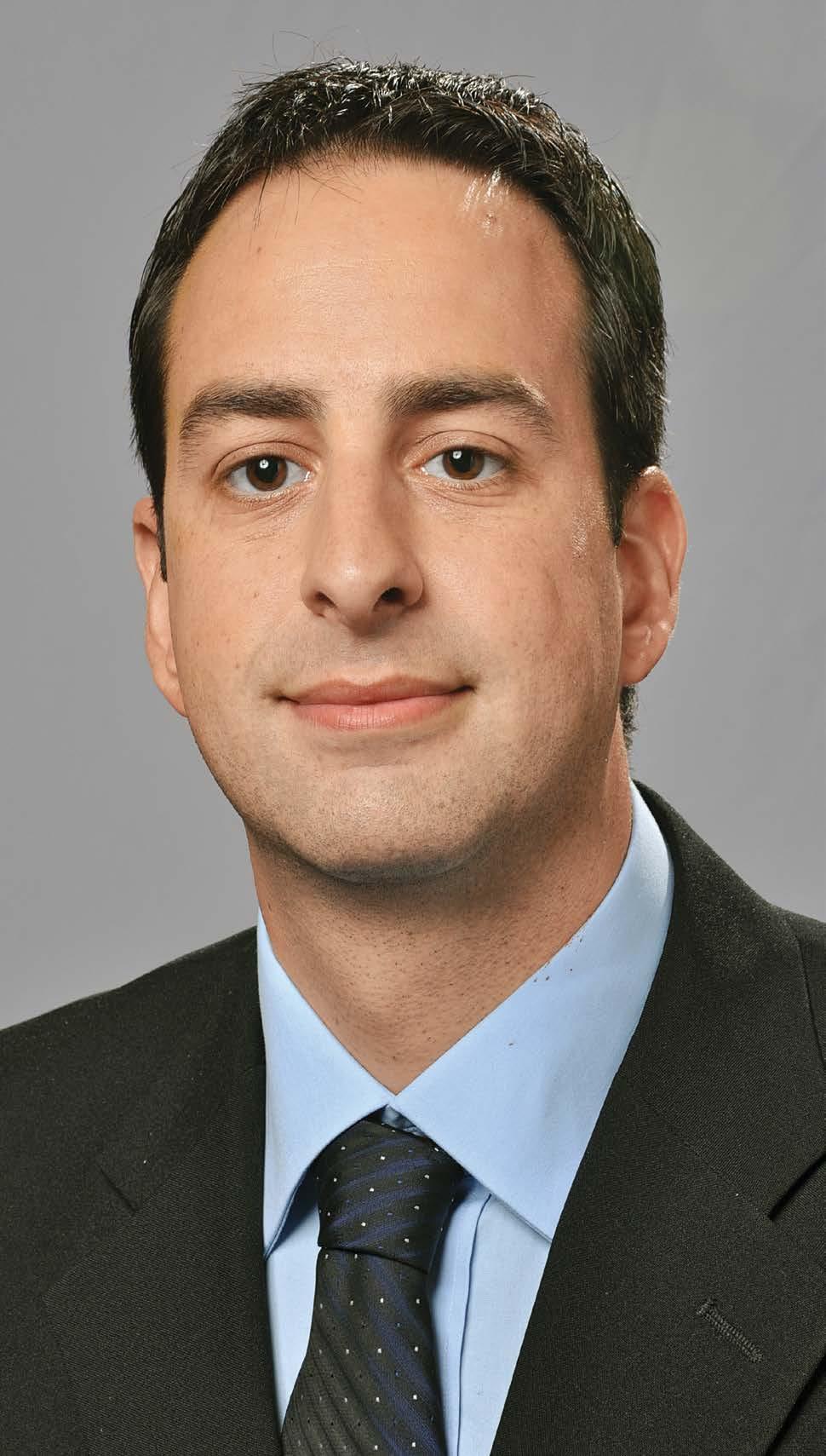
A: Mexico’s manufacturing footprint for the aerospace industry continues to grow. Honeywell has over 12,000 employees in the country and we are making significant investments. We have an R&D center in Mexicali that is doing a terrific job providing engineering and in-laboratory services for electronic and mechanical -products. We have a highly-qualified talent base to make this happen. On top of that, we recently expanded our engineering center in Mexico City’s Technopark, which is a first-ofits kind facility in Latin America and the third worldwide.
Q: What strategies is Honeywell implementing to secure supplies amid post-pandemic challenges?
A: The reactivation of economic activities in the post-COVID-19 environment brought supply chain challenges for all industries, including aerospace. Honeywell committed the company’s full resources to manage the impact of the pandemic and we collaborate closely with key suppliers. Our efforts included strategic forecasts to deliver components and services on time to customers, and collaborative planning with commercial partners and distributors to secure parts.
While the reactivation of the supply chain is a challenge in itself, it is important to emphasize that it comes in the context of a double-digit year-over-year increase in demand. We are seeing a substantial growth in the aviation industry so, when combining the reactivation of a complex supply chain with the increase in demand for our products, it brings additional challenges to keep serving our OEM and aftermarket customers. However, through good planning, right investment and hard work, Honeywell Aerospace has been working successfully to find solutions in the short term, while continuing to support the operations of our customers.
Q: What are Honeywell Aerospace’s main priorities for 2023?
A: The main focus for 2023 is to continue on the path to recovery in parts delivery and services. Aircraft production has increased, and we are putting together plans to cope with it. Also, Honeywell will keep investing heavily on R&D to continue developing new technologies and solutions to increase our customers’ profitability. On the other hand, people remain a key part of Honeywell. We will continue investing in our training and recruitment processes, bringing and retaining talents, while continuously improving the working environment.
Rogerio Botelho Director of Program Management | Honeywell AerospaceAirbus Reports Increase in Orders, Revenues in 2022
17/02/2023
Boeing Says Goodbye to “Queen of the Skies”
31/01/2023
Airbus Changes A350 Design Amid Qatar Airways Dispute
19/01/2023
Aerus to Buy 30 All-Electric Eviation Jets

18/01/2023
Bombardier Announces Preliminary Full-Year 2022 Financial Results
17/01/2023
Boeing, Airbus Increase Orders and Deliveries in 2022
12/01/2023
Stellantis to Build US Firm Archer’s Air Taxi
06/01/2023
Aerospace Industry Faces Broad Post-Crisis Hurdles: Airbus
08/12/2022
Boeing Asks FAA to Approve Paint Fix Plan for 787’s Wing Peeling
16/11/2022
Embraer to Get US$413 Million Financing for Production, Exports
15/11/2022
The pandemic caused numerous supply chain disruptions, greatly hurting the industry and delaying the production and delivery of critical components. In Mexico, the pandemic might have cost the aerospace industry US$1.5 billion in lost revenue, according to FEMIA. However, the outbreak also brought new opportunities for the Mexican aerospace sector.
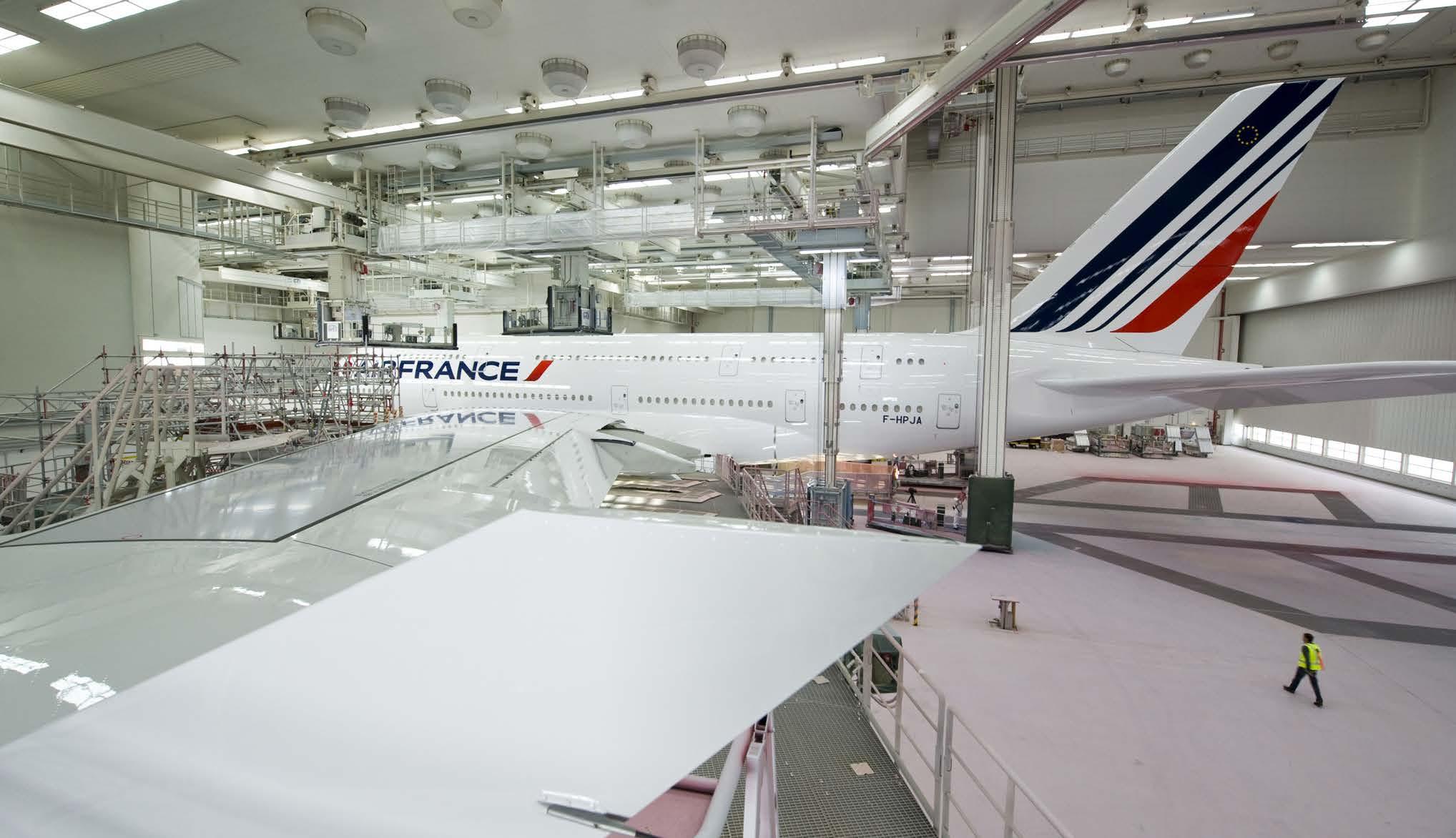
Mexico’s strategic location and highly skilled labor force make it an attractive alternative for global aerospace companies. The local aerospace industry has traditionally focused on manufacturing components and sub-assemblies for the US market. But the diversification of supply chains could open up opportunities for Mexico to expand its aerospace capabilities and strengthen its global position as a leading aerospace hub. Moreover, Mexico’s wellestablished free trade agreements and its location between the US and Latin America make it an attractive option for global aerospace companies seeking to expand their regional operations and supply chains.
This chapter analyzes the main opportunities and gaps to fill in Mexico’s supply chain. Through interviews with industry leaders, this chapter delves into strategies for Mexico to become an even more important player in the aerospace industry by attracting global investment and creating new jobs and opportunities for its highly skilled workforce.

Before the COVID-19 pandemic, Mexico’s aerospace industry was growing rapidly but the outbreak caused massive setbacks for the sector. Today, as the industry rebounds globally and nearshoring becomes increasingly important to Mexico, the local industry is again in a good position to grow. To take advantage of the coming opportunities, Mexico’s aerospace supply chain must grow in expertise and adopt new technologies and certifications.
One of the potential drivers for Mexico’s aerospace industry is nearshoring, which refers to the practice of relocating production facilities closer to the end market. This trend has been growing in importance in recent years, driven by rising transportation costs and the need for more efficient supply chains. Mexico’s proximity to the US, which is the largest aerospace market in the world, according to Statista, makes it an attractive location for nearshoring.
Mexico’s aerospace industry has also benefited from the country’s strategic location between North and South America, making it a natural hub for aerospace companies looking to serve the entire region. In addition, the country has a wellestablished manufacturing base and a skilled workforce, which have helped to attract investment from major aerospace companies, including Airbus, Boeing, Bombardier and Safran.
“The aerospace sector in Mexico will certainly grow and expand because of nearshoring. If you already have an operation in Mexico and want to integrate into the supply chain in aerospace, make sure you find the experts who understand the certification paths, contracting, industry business intelligence, volumes, cycles and pricing,” says Carlos Robles, President and Head of Aerospace, AMBE Engineering, in article for MBN.
While the current landscape presents several opportunities for Mexico’s aerospace industry, to seize them the country must strengthen its supply chain through strict quality and safety standards. To meet those standards, Mexican suppliers must gain more expertise and ensure that their operations are efficient and reliable.
The shortage of talent specialized in the aerospace industry is another global challenge that has become increasingly acute in recent years. The problem is due to a combination of factors, including an aging workforce, a lack of interest in STEM fields among young people and a growing demand for aerospace talent driven by the industry’s growth. This shortage of talent is particularly acute in specialized areas, such as materials science, advanced manufacturing and avionics, according to Global Aerospace.
In Mexico, the shortage of aerospace talent is a significant challenge for the industry. While the country has a wellestablished manufacturing base and a skilled workforce, there is a need to develop specialized skills and expertise to support
the industry’s growth. Some possible solutions to foster talent include expanding STEM education programs, creating more apprenticeships and on-the-job training opportunities and promoting careers in aerospace to young people, agree industry leaders.
“It is impossible to transform the industry without the proper technicians, engineers and personnel, as it is unrealistic for companies to bring foreign managers to operate in Mexico. There is no problem with the talent pool available in Mexico but educational institutions have to align their efforts to the real needs of the industry,” says Humberto Ramos, CEO, HT-MX.
In addition, triple-helix collaborations between universities, industry and the public sector to develop more specialized training programs and to support R&D is crucial. By investing in talent development, Mexico’s aerospace industry can continue to grow and remain competitive in the global market. According to the Mexican Space Agency (AEM), every dollar that is invested in space telecommunications will recover US$60. “It is necessary that industry, government and academia collaborate on activities to promote the development of these sectors, drive greater participation of professionals and expand investment and growth opportunities in the industry for the benefit of Mexican society,” writes Enrique Sosa, President, Universidad Aeronáutica en Querétaro, in an article for MBN.
Technology adoption is another key area for Mexico’s aerospace industry. As technology advances, aerospace companies are looking for suppliers that can provide cuttingedge solutions. This requires suppliers to invest in R&D and to stay up-to-date with the latest technological trends. Mexico’s suppliers must develop their capabilities in areas such as materials science, advanced manufacturing techniques and automation to remain competitive, Sergio Segura, CEO, Innocentro, tells MBN.
Certifications also play an essential role in the aerospace industry. Suppliers must comply with a wide range of international standards and certifications, including AS9100, ISO 9001 and NADCAP. These certifications demonstrate that suppliers have the necessary processes in place to meet the high-quality and safety standards required by the aerospace industry. “To be part of this selected club (the aerospace supply chain), you must have certain credentials depending on your tier level in the supply chain. You must be AS9100-certified and sometimes NADCAP-certified as well. Additionally, sometimes companies need special OEM approvals that can be even stricter than industry certifications. These efforts can take years and some serious invested money,” writes Alberto Robles, Senior Engineering Manager, General Electric Infrastructure Queretaro, in an MBN expert contribution.
With rising demand for air travel and constant innovation disrupting the aviation sector, such as urban air mobility (UAM), sustainable aviation fuel (SAF) and hybrid and electric aircraft, Mexico is in a key position to continue investing in the aerospace industry by taking advantage of its strategic location, highly skilled workforce and growing experience.
 Former President | Chihuahua Aerospace Cluster
Former President | Chihuahua Aerospace Cluster
The new opportunities for doing business in America — specifically, nearshoring — require the restructuring of the supply chain built in the past, and the development of a more logical, practical and economical chain. This collaboration certainly goes way beyond what has been done so far. The need is clear: how to promote the integration of the country’s Tier 3 and 4 within the aerospace industry? To succeed, we must develop a completely different approach to all the elements of the equation.
First, the potential suppliers will have the opportunity to gain experience in a world-class supply system, and to develop capabilities, certifications, business models and technology based on the demand they face. Understanding all of this is far from easy, or risk- free. I am convinced the first stage is to develop the mindset for the journey, and to understand that the “big wheel” of the aerospace business in which they are enrolling their business turns very slowly. Once in the industry, the investment return takes more time but the possibility of better contracts, and continuity, is considerable. Also, once you are in, other potential buyers consider you right away and the competitor’s risk is as hard as your own developed capacity and experience allows it. Therefore, the name of the game is to think for the long term.
Here is what is most needed: mindset, preparation, training to the existing levels of the organization, documentation that helps with today’s operations and which provide the basis for future growth, some investment, certainly, and good communication skills. It is also necessary to create synergies and uncover what can be done for and what is needed by potential customers in order to develop a shared strategy of “supplier development.”
Second, potential customers: these are the OEMs, Tier 1 and Tier 2 elements of the aerospace supply chain. These elements, I believe, should also rethink, or remodel, their processes according to the circumstances of today. The supply base requires hands-on participation, where these players can be guided with a continuous program that allows the learning process to flow, and finally develops the level of industry required to support the sector’s needs. They need to train on the certification elements, negotiate economies of scale and prices with the certification bodies for the suppliers in the process.
Financially, there is also an opportunity to help companies by providing international interest rates on loans since the local rates would represent 12-16% on top of prices if financed even by the usual banks. This is a necessary burden to keep suppliers operational.
Another topic of discussion are material prices. Small vendors logically have little leverage to negotiate prices, deliveries and attention from raw material suppliers. Economies of scale affect the final price on products where raw materials represent a very significant portion of the total costs of manufacturing; this leads to a non-competitive position. The proposal is to follow best practices like Boeing does on metal products, where vendors can get metal materials on a base price given to them directly.
Third, and a less considered factor, is the government. Regulations, laws and conditions that facilitate the process during the supplier’s development and during the commercial relationship is extremely important.
Q: How has AMBE Engineering expanded its business over the past 20 years and what role do clients operating in Mexico play within the company’s operations?

A: We have been highly successful in managing operations during crises, specifically in on-the-floor operations. We also help companies develop their suppliers. We have many experienced consultants in the Mexican market and, given that we have operations both in Mexico and the US, we can provide a comprehensive service.
Most decisions within the aerospace sector are made in the US but Mexico is becoming more important because of subjects like nearshoring. Many customers want to move operations or find suppliers in Mexico and helping them to do so has been the foundation for our 20 years of growth. We first specialized in the automotive sector and for the past two years, we have been working in the aerospace industry, helping customers do transfer operations and manage crises with suppliers based in Mexico.
Q: How was the transition from the automotive sector to the aerospace industry?
A: It has been an interesting change but not an easy one. Most people might think that because aerospace has lower rates, low volumes and high customization, transitioning from the automotive sector would be easy but it is not. Understanding the supplier relationships and negotiating with OEMs, for example, take a long time. If something is going badly in the automotive sector, it is easy to change suppliers because there are thousands of them. In the aerospace sector, given its highly specialized nature, one cannot jump from one supplier to the next. The aerospace industry has a much more collaborative environment, which creates many challenges because it makes it hard to get into the sector. Once you are there, it is a long-term business.
Q: What are the aerospace sector’s main supply chain challenges?
A: The COVID-19 pandemic shook the aerospace sector. Some companies did not survive and were replaced by others. We are now integrating these new companies and their operations into the sector, which usually results in hiccups related to processes, materials and deliveries. Logistics disruptions have also caused difficulties by making certain materials unavailable and increasing waiting times from 13 to 30 weeks on average.
Some aerospace companies increased their operations because they were smart enough to diversify into the automotive sector and other industries, and vice versa. These companies bring new things to the table.
We are in a critical moment where there are many opportunities because the world is facing issues like the war in the EU and the commercial war between China and the US. These factors have made customers realize that they need production in the North American region. This is a great opportunity for Mexico and we are already seeing businesses moving from Asia to the country.
Carlos Robles President and Head of Aerospace | AMBE EngineeringQ: Why should companies looking to improve their manufacturing operations consult third-party firms?
A: It is all about efficiency. AMBE accompanies the client, finds the weak and blind spots and offers consultants with all levels of expertise in logistics, quality, production, price management and safety. Similar to a visit to a doctor, we make a diagnosis and decide what is necessary to transform that weak spot into a strength. Consultancy is like medicine because companies are not supposed to take it forever. We help companies take a “picture” of how the company was before we worked with them, measure the changes and coach customers to maintain the implemented systems.
To reduce clients’ production costs, one of our most common strategies is to help them develop new suppliers. Companies often import parts from the EU, Asia or the US. We are helping those companies to build a supply chain in Mexico, which is closer. While production is not that different in terms of pricing, logistics is one of the most expensive operational elements. We also help companies optimize their purchasing systems, which are usually poorly organized, to consolidate shipments and volumes. Finally, we are also working with customers to create new logistics routes to help improve distribution. While globalization is great, the trend is to go regional to help reduce risks and costs and be more efficient.
Q: How do you think nearshoring will impact the aerospace industry and how can companies prepare for the coming challenges?
A: Nearshoring will change the industry. AMBE offers softlanding services, so we have already been contacted by a couple of companies interested in bringing their operations to Mexico. Large OEMs in the US and Canada are demanding that their supplier base is present in the region. This megatrend will likely keep growing. Many companies with contracts in Asia due in 2023 or 2024 have already decided to take those operations to North America, mainly to Mexico, both in the automotive and aerospace sectors. The transition will take longer in the case of the aerospace industry because of the certifications, suppliers and volume changes involved, but it will happen.
Q: In your view, how is Mexico preparing for the global demand for specialized aerospace talent?
A: The integration of capabilities has been done well. Components in the aerospace sector require many processes, so it is not possible for a company to do everything alone. There should be one player connecting all the dots and encouraging teamwork, so this is a significant area of opportunity. We have gotten SMEs to talk to each other and to work together.
More people are becoming interested in the sector. Alongside the Mexican Council for Aerospace Education (COMEA) and the Mexican Federation of the Aerospace Industry (FEMIA), we are developing plans for universities and technical institutions. This way, we will have the right people with the right skills in the right region. So far, it has not been an issue but it is a challenge we want to get ahead of because if demand grows as we expect it to, there will not be enough talent to attend to the market.
Q: What does Horizontec mean for Guanajuato and the Mexican aerospace industry?
A: Although we have several interesting operations within the state, Horizontec is the flagship company for Guanajuato’s aerospace industry. It represents the capabilities of our country. Guanajuato is proud to host Horizontec, a company that designs and manufactures light-sport aircraft (LSA). Horizontec is building manufacturing facilities and will begin production soon. In the next few years, the company will manufacture about 20 airplanes annually. This is encouraging for Guanajuato and Mexico.
Q: What challenges and opportunities does Horizontec’s operations bring to local suppliers?
A: Finding suppliers for Horizontec has been an interesting challenge because the region does not have many companies that sell raw materials or provide specialized processes. Carbon fiber and composite materials, for example, must be imported.
However, Horizontec can generate opportunities for suppliers by certifying its suppliers, facilitating the insertion of new companies into the aerospace supply chain, especially for machining and plastic-injection. This will help companies migrate from other sectors to the aerospace industry. BJXAerospace also drives the diversification of companies, mainly in the transition from the automotive sector to the aerospace industry.
Q: What makes Guanajuato an attractive state for the aerospace sector?
A: Guanajuato is focusing on developing technology, processes and products. In the automotive sector, for example, Mexico is more focused on maquila operations but aerospace focuses on innovation and technology to offer diverse services to airlines.
For example, a company in Guanajuato that made shoe leather saw an opportunity to produce airplane seats. Through R&D, the company developed a tanning process to lower the weight and density of the leather while increasing its resistance. The company now sells its solution to national and international airlines.
Q: What strategies is BJXAerospace implementing to grow the aerospace industry in Guanajuato?

A: BJXAerospace focuses on three main strategies: talent development, supply chain and promotion. To develop the industry, the state requires talent and specialized training. The cluster works closely with academia. The state has campuses where aerospace technicians and engineers are trained, in addition to schools for pilots and flight attendants. We also support the design of programs for those already working in the sector.
Regarding supply chain integration, BJXAerospace puts a great deal of emphasis on supplier development. We evaluate the competencies of suppliers and check if they match demand. We focus on avoiding duplication and we have adopted the good practices of other clusters and of FEMIA, which knows the sector’s needs.
Alejandro Arredondo Managing Director | BJXAerospaceQueretaro’s aerospace industry keeps growing despite challenges, with the state playing a crucial role in national and international supply chains. Thanks to its labor force, universities and ideal location, experts say the state has the potential to take a more prominent role in the aerospace industry.
Queretaro’s geographic location, near the ports of Manzanillo and Lazaro Cardenas, has been essential to its success in the aerospace sector, says Marco Antonio del Prete Tercero, Minister of Sustainable Development of Queretaro (SEDESU). The state is also regionally central and well connected to other strategic industrial states, such as San Luis Potosi, Irapuato, Leon, Guadalajara and Puebla. However, Queretaro’s main asset is its talent, which is the result of the industry’s strong collaboration with academia and R&D centers.
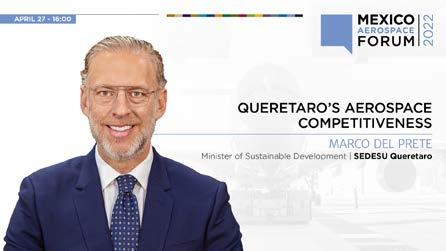
Queretaro’s main strength lies in its education system, which has received support from both the industry and the local government, says del Prete. “We have equipped technical and technological universities in the state, including Universidad Politécnica de Querétaro (UPQ), Universidad Tecnológica de Querétaro (UTEQ) and Universidad Tecnológica de San Juan del Río (UTSJR).”
The state also hosts Mexico’s only aeronautical university: UNAQ. Graduates usually work for multinational aerospace companies established in the state, which include Bombardier, Eurocopter, Aernnova, Tremec, ITP, Grupo Safran and TechOps. The university is leading numerous aerospace projects, including some for the development of unmanned aerial vehicles (UAV) and composite materials, the latter alongside SEDENA. Other projects include flight simulators for pilot training, developed with the Mexican Air Force and a femtosatellite built with MxSpace through Thumbsat. The university also performed research on nano, micro and picosatellites, launchers and navigation systems with the Mexican Space Agency (AEM).
UNAQ recently reached an agreement with Bombardier Aerospace for a fast-track training program for the manufacturing of harnesses for their aircraft. UNAQ is the only university in Mexico that focuses completely on aerospace studies.
These strengths have helped make the state competitive. “We receive a superior investment amount compared to the major municipalities in Mexico. We have the top grade on the national scale of stable perspectives. We were awarded fifth place in the Global Cities of the Future with Overall Economic Potential 20212022 and we are the second-most attractive state for investment in Mexico,” explains del Prete. Additionally, Queretaro has no public debt and has the healthiest finances, he adds. It is also the thirdmost competitive state in Mexico.
In the aerospace industry, Queretaro is home to two OEMs, 26 Tier 1 and Tier 2 suppliers, five MROs, 19 general services companies, 12 research centers, four raw material suppliers and seven academic institutions. It ranks eighth among cities with the best FDI performance for the aerospace sector.
“Queretaro has experienced 200% growth in aerospace companies since 2006. Most companies focus on manufacturing (72%), followed by R&D (13%) and maintenance and repair (11%),” says del Prete.

Q: What role does HEMAQ play within Mexico’s aerospace industry?

A: HEMAQ focuses on innovation and breaking paradigms to bring the latest technology to Mexico’s aerospace industry. We aim to provide the best solutions and support to customers in their markets and territories. HEMAQ prioritizes productive and efficient manufacturing using the latest technology. Mexico is recognized as a global manufacturing powerhouse and we seek to continue contributing to the country’s industry.
Q: How have you merged innovation with tradition to earn client trust and loyalty?
A: Our core values guide us and within that, communication and relationships are key. We offer solutions, not just products. We follow through on proposals and exceed expectations, earning trust and success.
Q: What aspects should companies consider when bringing in new equipment to their production lines and how do quality performance and total cost of ownership factor in?
A: Total cost of ownership is critical when evaluating equipment for a specific application and environment. Quality and performance are also important, with uptime being a key parameter to consider. The lower priced option may not be the lowest cost over the life of the equipment. Customers should avoid getting swayed by price and focus on the benefits of the investment. Quality should also be a top consideration.
In the case of capital goods, making a decision based solely on price can be a huge mistake. Long-term analysis is crucial when it comes to capital goods. This means taking into account the availability of spare parts, support, the latest technology and the uptime of the machine throughout its life cycle. Capital goods are a long-term investment and should be treated as such. Even if a machine is only needed for a specific project, it is important to consider the long-term benefits of the investment rather than just focusing on the project duration. Therefore, it is not advisable to purchase a machine for a specific project and forget about the investment once the project is over.
Q: How should industry players adopt the Industry 4.0 concept?
A: The concept of Industry 4.0 has been popular since it was first introduced over a decade ago in Germany. HEMAQ has been ready for this technology with its electronic controls in equipment and machinery. However, it is still our responsibility to educate the market on this concept. Many clients are attracted to Industry 4.0 but there is a need to understand what they hope to achieve with it. It is not just about collecting data but also arranging and interpreting it to implement effective solutions.
The technology has been ready for years but there is still a cultural barrier to overcome. HEMAQ has established a team to work on this issue. The investment in Industry 4.0 can only be successful if there is proper planning; otherwise, the investment will be lost. The data from machines can be easily retrieved and displayed on screens but the real challenge is what to do with all that data. It requires analysis to determine if a machine is operating correctly and what actions to take.
Benito Gritzewsky CEO | HEMAQQ: How do added-value processes like HIPing grow the Mexican manufacturing sector?
A: High value parts require high-added value processes to be manufactured. This includes secondary processes such as HIPing, heat treat, plating, among others, as well as efficient manufacturing techniques. With this in mind, Chihuahua and Mexico´s aerospace industry has been evolving for some time, moving from simple assembly to very tight tolerance machining, manufacturing and secondary processes.
Naturally, having added value processes such as HIP allows international companies to transfer this high end parts and still be competitive by avoiding the time consuming and costly operations of shipping parts across borders just for an operation. Having certified suppliers promotes the near shoring of these high complexity parts which in turn help develop more complete and complex operations in Mexico. This eventually generates more opportunities and can detonate the growth of many industries.
The certification for HIPing and other secondary processes involves a long process. It requires certifications, NADCAP, AS9100, customer validation and sometimes even foreign government permits. Throughout the process, trust is crucial. If your customer does not fully trust in what you are doing, you will not go far. It requires a great deal of collaboration with the customer. However this is something that the local industry is able to do and has been happening for a while now.
Other companies in Chihuahua are running different specific processes, which end up adding a great deal of value to the industry, which in turn, helps to broaden the Mexican industrial environment. Among the main goals with these processes is to continue filling the gaps within the manufacturing supply chain and bring continuous growth to the industry.
Q: How does HT-MX leverage its strategic location in Chihuahua?
A: Chihuahua has a well-developed aerospace sector, with a good presence of OEMs and Tier 1s in the state. HT-MX has been operating for about 10 years, enabling us to make connections and stay involved with the cluster and chambers. Also, it is helpful to have open and constant discussions with other players, which often serve the same companies as we do. Finally, Chihuahua’s location gives us quick access to the Mexicali region, the US and the Bajio region.
Q: What processes does HT-MX offer to the Mexican industry?
A: HT-MX offers a wide variety of processes. Additional to our HIP service, our Heat Treat NADCAP scope includes most of the heat treatments for carbon seetls, stainless steels and aluminum, in addition to certain heat treatments for nickel-based alloys. We do a lot of aging and precipitation hardening, aluminum hardening, quenching and aging. Also, we do carbon steel and provide services for other industries. We used to do a great deal of work for the oil and gas industry and we also serve the medical devices and automotive sectors.
 Humberto Ramos
Humberto Ramos
Q: What makes Element the best provider of aerospace material testing and how does the company offer support for R&D and production?
A: We are a service company, providing both destructive and non-destructive metallurgical testing. Our goal is to be the best partner for our customers by meeting their needs in all areas, including safety, environmental compliance, operations and quality. Above all, we adapt to each and every one of our customers’ needs, adjusting our service to offer this flexibility. Our R&D and production services give our clients an extra hand.
Being a transnational company makes us highly competitive, which is a great advantage. We are present all over the world and can request support from our sister sites when necessary. We can perform all the tests a company requires. If a service is unavailable at our plant in Monterrey, it can be done in another Element plant, although we act as a single point of contact to greatly simplify processes.
Q: How does Element innovate continuously within its metallurgical testing services to keep up with both traditional metals and advanced alloys?
A: In the aerospace sector, metallurgical tests are always necessary to develop new materials and Element offers tests that other companies cannot. We run tests that other companies might consider exotic but they are part of our daily business. We adapt our processes to the client’s needs. On occasions, we have had to develop experimental designs to perform the necessary test in the most efficient way possible, which is why we make tailored products.
Q: Why should companies outsource TIC services rather than running them in-house?
A: These tests require a great deal of specialization during the processing, execution and interpretation of results, as they involve uncommon materials. Investing in developing these processes in-house is not an attractive option for customers, especially those that do not focus on testing. Furthermore, these tests require certain certificates and approvals that often take years to obtain, making them a significant and complex investment for manufacturing companies. Thus, they prefer to leave it to us.
Q: What added value does Element Monterrey provide to clients within the other industries in which the company operates?

A: These facilities specialize in metal testing for the defense and aerospace sectors, which gives us an advantage in other sectors, such as oil and gas and automotive. These facilities can provide service to any sector that requires material testing, although our main industry remains the aerospace sector.
Most industries tolerate very few errors in the materials they use but the aerospace sector tolerates even fewer; the sector has no room for error. The high standards in this industry provide customers in other sectors with certainty. By having a quality system and technicians specialized in the aerospace industry, we provide better quality in other services.
Vladimir Lara MendozaQ: How does Vazdelar provide the latest technology in painting systems by electrodeposition?
A: Vazdelar works closely with partners that make the paint, treatment chemicals and equipment. We stay up-to-date on the latest advancements in technology by attending forums and events as well as by being in direct communication with manufacturers.
The deployment of new technology is heavily dependent on the authorization of the automotive and aeronautical industries. Our aim is to meet the latest requirements of all manufacturers and provide the necessary equipment, such as washers, ovens and conveyors, to apply coatings.
Q: How does Vazdelar integrate Industry 4.0 within its product offering?

A: Vazdelar is actively investing in the development of 4.0 technology. Also we are working with a Spanish company in the implementation of machines as “human eyes” for a better control and documentation.
Our manual devices can monitor any process 24/7 any process and we are working with a Spanish company to train human supervisors in the use of the machines for better control and documentation to provide real-time information. The teams are being trained to work with this technology, allowing for the fast identification and prevention of faults or issues. Our goal is for our teams to be fully trained in the implementation of this technology in any continuous process.
Q: How is Vazdelar innovating toward improving nitrogen technology?
A: Vazdelar is promoting a European new nitrogen technology for powder and liquid painting processes. Instead of using compressed air, it uses nitrogen from a nitrogen generator. This brings many benefits, such as saving paint and solvent, best adherence, increasing quality and productivity and reducing flashing zones and the need for retouching.
Vazdelar is bringing Italian nitrogen technology to Latin America. Previously, having a nitrogen generator was expensive but the new online generator technology makes its production cost-effective. Nitrogen ionization is crucial in electrostatic painting. Vazdelar has distribution in Latin America and is now looking to expand to all of South America through distributors.
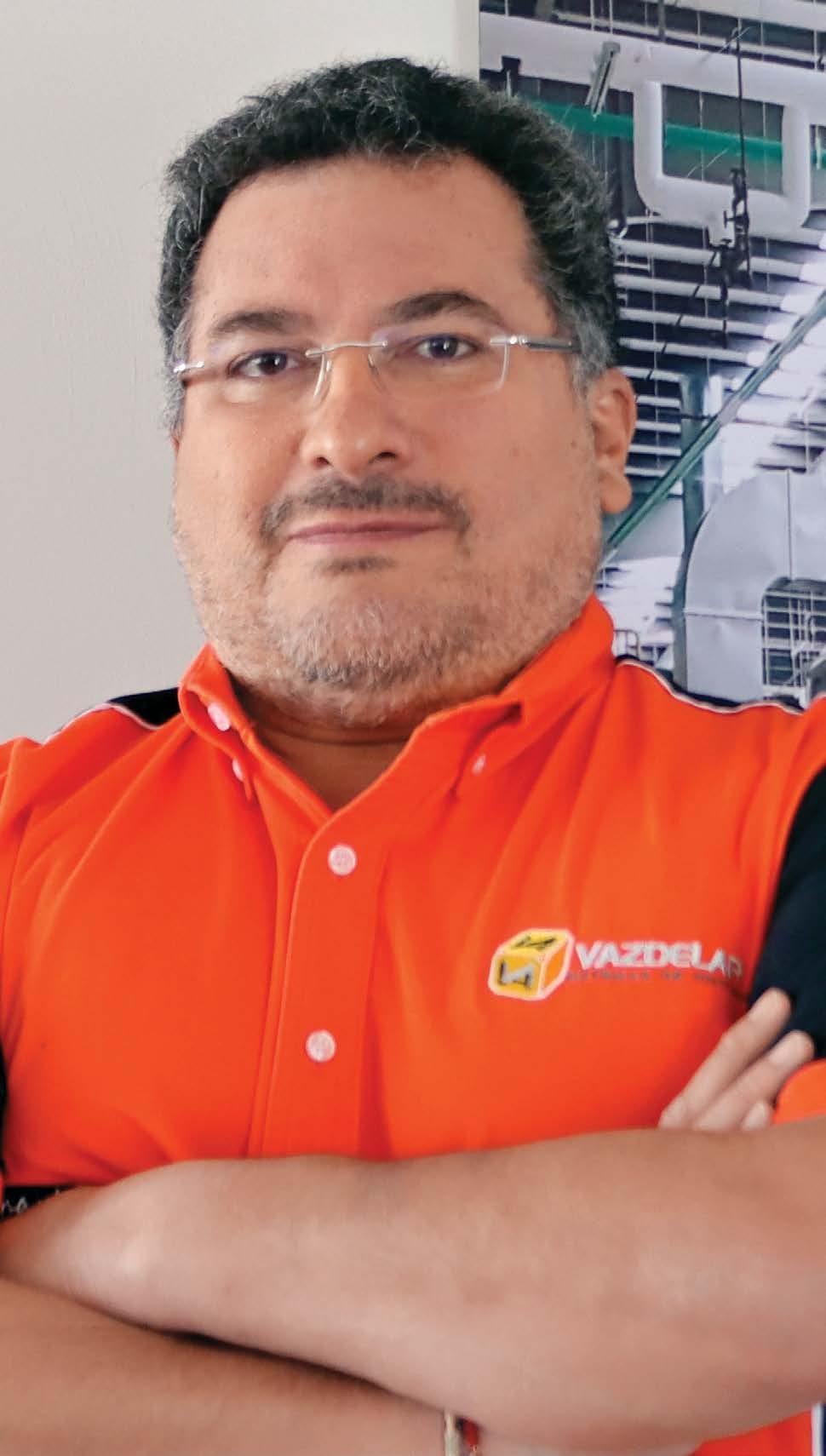
This technology is not well-known but is very easy to implement and no maintenance is needed. The cost benefits are significant as it offers quick recovery.
Q: What additional benefits does nitrogen painting provide to clients?
A: Nitrogen technology for painting processes saves 30% in expenses, while reducing the use of solvents and being more environmentally friendly. It also results in using less paint and creating a better working environment for the operator, who avoids exposure to some hazardous substances.
Sergio Vázquez de Lara CEO | Vazdelar
Q: How does Optimen support airlines across the world through its work with Jeppesen and Boeing Digital Aviation products?
A: Optimen develops optimization software for flight operations. The software solution plays a crucial role in commercial, military, cargo and general aviation, making flight operations much more efficient, reliable and cost-effective. Besides developing, implementing and supporting Boeing Digital Aviation products, we have also developed solutions for other segments, such as ground operations and logistics. Our main client is Boeing but we also provide our services to several Latin American commercial airlines and to some in the EU.
Q: What are the main factors that determine success in the current aviation market?
A: There are several areas of aviation and they are all evolving. The key for success is to take advantage of the technologies that already exist and leverage Optimen’s capabilities and know-how to provide the best solutions. In the current challenging landscape, robust software can make the difference for companies to succeed.
In aviation, there are several factors to consider for software applications, from aircraft maintenance to passengers, crews, airports and other variables. The software solutions needs to be flexible enough to be able to adapt to different necessities. Airlines themselves have different needs and cargo operations are different from those of general and commercial aviation.
Q: Highly specialized talent is scarce. How should companies work to hire the best talent available?
A: The aerospace and IT sectors require highly specialized talent. The combination of both makes it a very specific sector regarding the talent shortage. As owners, investors and managers of companies, we must understand that the labor market is changing. Several key aspects of work changed dramatically after the COVID-19 pandemic, such as the prevalence of remote work, which opened the competition for talent to international players. Companies no longer compete with their neighbors for the best talent, they are competing with businesses from around the world.
HR departments and companies in general must understand that engineers’ salaries must increase and offer other benefits, such as vacation time and remote work to attract talent. It is all about offering a fun, challenging, well-paid job.
Q: What are Optimen’s main priorities for 2023?
A: In 2023, our main objective is to scale up. Optimen has evolved with the times. For most of our history, we have exclusively supplier for Boeing Digital Aviation. We started scaling up a few years ago, growing directly with different customers. Optimen now works with the top six commercial airlines in Latin America and we have started to sign customers in the EU.
There is a strong demand for software that could complement the existing solutions. There is a major niche with diverse needs, including ground, airports and MRO operators. Optimen’s objective during 2023 will be to scale up our operations, integrate more customer in our portfolio, provide the best-of-breed solutions and develop new services and products to serve the aviation industry.
Óscar Rodríguez CEO | Optimen President | BJXAerospaceBoeing Halts 787 Deliveries due to Fuselage Component Issue
24/02/2023
CONAMER Approves Ban on Cargo Operations at AICM
13/02/2023
Relocating Operations Could Cost Over MX$100 Million: Estafeta
24/01/2023
SICT Backs AIFA as Cargo Hub After Private, Public Analysis
23/01/2023
ASA Network Registers 30.8 Percent Growth in 2022
16/11/2022
How to Deal With Inflation in the Supply Chain
Alberto Robles Senior Engineering Section Manager | GE Aerospace
Supply Chain Disruptions and How to Face Them
Carlos Robles President | FEMIA
Mexican Suppliers Gain Traction in Aerospace Industry

26/09/2022
Supply Chain Solutions to Increase Profitability
Jaime Gutierrez Supply Chain Senior Executive | Incora
The 4.0 Concept in the Aerospace Industry
Marcos Rosales Executive Consultant
Collaboration Essential to Adress Supply Chain Gaps
Beatriz Aguilar General Manager | Axon’ Interconex
With its growing economy, vibrant culture and beautiful natural landscapes, Mexico has become a hub for travelers worldwide. Passenger centricity has also become a major focus for airlines, with companies striving to enhance the travel experience for their customers. The industry is now betting on sustainability by adopting environmental, social and governance (ESG) practices, investing in eco-friendly technologies and implementing strategies to reduce its carbon footprint, such as using biofuels and investing in renewable energy sources. Airlines have been collaborating with local communities in Mexico to promote conservation efforts, such as protecting marine life and reducing plastic waste.
However, the sector has been shaken by changes to the country’s aviation law and the decision to ban cargo operations at the country’s main logistics hub: Mexico City International Airport (AICM). Furthermore, the country is still working to recover the US Federal Aviation Administration’s Category 1 rank, which will allow it to increase its routes to the US.
This chapter will analyze the transformation the aviation industry is undergoing to increase sustainability and improve the passenger experience, while keeping up revenue. It will also delve into the main challenges the sector faces in Mexico through the experiences of leaders in the sector.
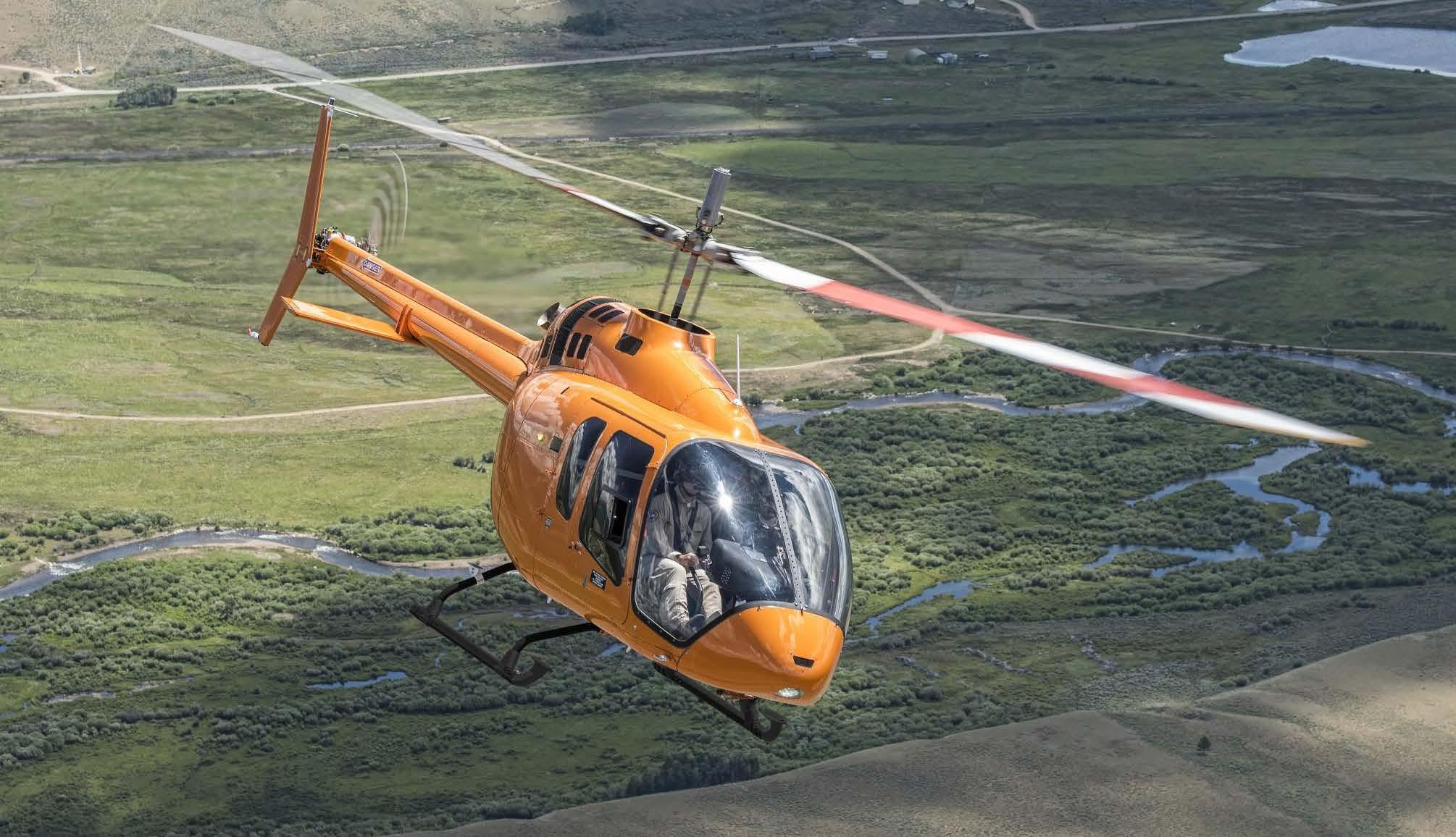
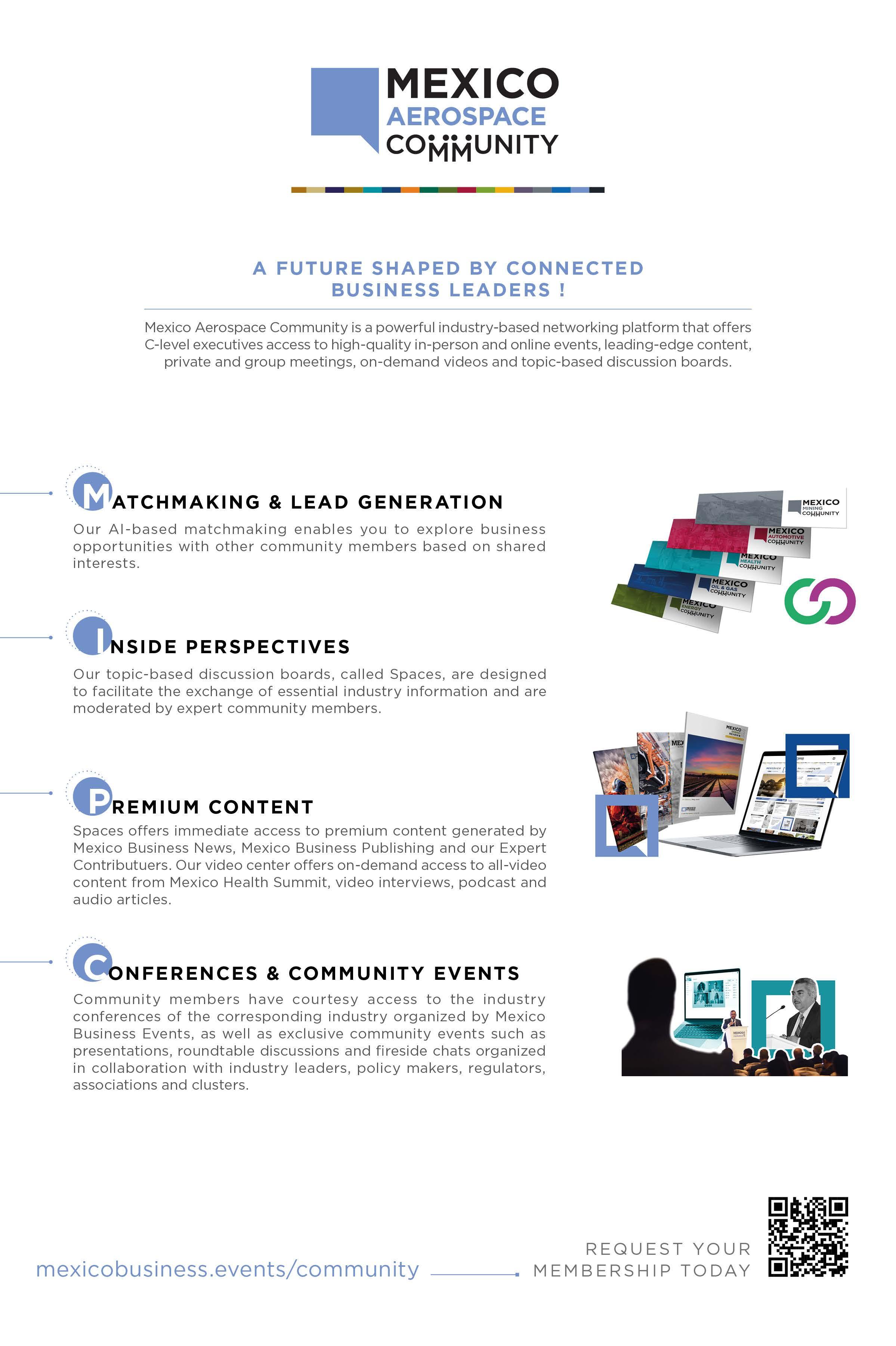
While COVID-19 quarantines are long past, the global aviation industry continues to face challenges in getting passengers to fly again. In Mexico, airlines received little governmental support during the pandemic but the country’s open border policy allowed the industry to stay afloat and swiftly recover once other countries opened their borders. The country is now seeing a robust recovery of passenger traffic but the industry is still being threatened by both internal and external factors.
During the first two months of 2023, the number of passengers mobilized by Mexico’s airports grew by 28.2% year over year for a total of 28.93 million passengers, reports the Federal Agency of Civil Aviation (AFAC). Of those, domestic passengers totaled 18.86 million, a 27% increase year over year, while international passengers totaled 10.04 million, a 30.5% increase.
Air cargo also started 2023 with positive figures, growing by 5.2% during the first two months of the year for a total of 183,910 tons of cargo transported. Mexico City International Airport (AICM) was responsible for most cargo movements, transporting a total of 95,764 tons during January and February 2023, a 10.1% increase year over year, according to AFAC in its airport operational report.
AFAC, an office of the Ministry of Infrastructure, Communications and Transportation (SICT), reports that domestic air cargo increased by 1% year over year to 59,241 tons in the first two months of 2023, while international air cargo grew 7.3%, reaching 124,669 tons during that period.
While the aviation sector seems to be well on its way to recovery, recent governmental measures are shaking up the sector, such as the air cabotage reform and the movement of all air cargo operations that take place at AICM to Felipe Ángeles International Airport (AIFA).
In December 2022, President Andrés Manuel López Obrador formally proposed allowing air cabotage in Mexico. The suggestion was widely criticized by many players in the aviation industry, including workers, associations and companies. López Obrador argued that, through the authorization of foreign airlines, regional routes will expand, benefiting users by providing them a greater diversity of options at lower costs, which will also help to boost tourism.
“Foreign airlines arriving from the EU and the US could grow the number of flights in the country. This would mean more competition. Recently, we went to Victoria (Tamaulipas) and there were no flights other than one at 6 a.m., which was very expensive. We are working on this (aviation prices) and we are going to solve it,” says López Obrador.
However, several groups in the Mexican aviation industry have criticized López Obrador’s cabotage initiative, including
Mexico’s Air Pilots Labor Union (ASPA) and the Mexican Front for Defense of National Aviation (FDAN). “The premise that cabotage would foster competition within the Mexican aviation sector is false and it would only bring a massive impact on the industry, including job losses,” says ASPA Spokesperson José Gerardo Alonso.
In January 2023, López Obrador’s administration also banned cargo operations at AICM, the country’s largest cargo hub, starting in 2Q23. While the decision will not affect commercial airlines’ cargo operations, dedicated cargo airlines will have to move their warehouses, personnel and operations to AIFA or other airports. The decision aims to improve mobility for passengers and reduce saturation at AICM. However, cargo airlines argued that the switch would increase costs and threaten various business models based on sustainability and budget efficiency.
The decision to ban cargo at AICM was also met with criticism from the aviation industry. The International Air Transport Association (IATA) argued that forcing airlines to move their cargo operations in such a short time frame is not feasible given the enormous technical, regulatory and infrastructure requirements.
“Neither the airlines nor the associated cargo supply chain can pack up and move to an alternative airport. This process involves complexity and must be well-planned to avoid operational disruption. To do this, we need all stakeholders to work in a coordinated manner, ensuring the safe and efficient flow of cargo in and out of the country,” says Peter Cerdá, Regional Vice President for the Americas, IATA.
While AIFA had no recorded cargo operations during the first two months of 2023, according to AFAC, the airport is expected to grow sharply in the coming months due to the cargo ban at AICM. During that same period, AIFA received a total of 186,600 passengers, of which 175,800 were domestic and the rest international.
Another issue that could potentially restrict airlines’ growth is limited competition in the jet fuel market, argues the Federal Economic Competition Commission (COFECE). While jet fuel is a key component of Mexico’s aviation industry, the market is dominated by a few major players, limiting competition. The Airports and Auxiliary Services Network (ASA) is the main supplier of jet fuel in the country and PEMEX dominates Mexico’s oil and gas market, including the production of derivatives like jet fuel, according to COFECE. Jet fuel represents between 25% and 30% of the operating expenses of airlines and contributed 3.08% of Mexico’s transport GDP in 2021, according to INEGI.
Mexico’s aviation industry is expected to continue growing in 2023. The country expects to receive 39.4 million international tourists during the year, which is a 2.7% increase over 2022, reports the Ministry of Tourism (SECTUR). In addition, average spending per international visitor is estimated at US$448.2, representing an increase of 77.6% over 2019. Of the 39.4 million international tourists, 21,491 million will arrive by air. These latter tourists are expected to contribute US$25.2 billion to the local economy, US$1.647 million or 7% more than in 2022.
In December 2022, President López Obrador formally proposed to allow air cabotage in Mexico, receiving a negative response from the aviation industry, from workers to associations and companies. While several players claim that cabotage could be very damaging for the sector, removing entry barriers would be positive, increasing the number of competitors on domestic air routes and benefiting the entire market, as long as there is reciprocity, according to BBVA Research.
The supply and demand theory works the same in aviation as in any other industry. As the offer of domestic flights grows, pressure on the market increases, providing users with more options to fly while companies are forced to improve their prices and quality of service to maintain user loyalty. According to the research by Kwoka and Shumilkina (2010), who analyzed the merger between USAir and Piedmont Airlines, the elimination of a potential competitor allows the other company to raise prices by 5-6%. In addition, Goolsbee and Syverson (2008) show that airlines present in US domestic routes significantly lowered their rates due to the threat of entry of a potential competitor and saw an increase in demand for their services. More competition translates into lower rates, states COFECE.
Cabotage rights allow companies from a certain country to trade in a different one. In aviation, it is the right to operate within the domestic borders of other countries. Cabotage is prohibited in most countries due to public safety, protectionism and national security matters. The main exception is the EU, where all member states grant cabotage rights to each other.
López Obrador’s reasoning behind his proposal is that, through the authorization of foreign airlines, regional routes will expand, benefiting users with a greater diversity of options at lower costs, which will also help to boost tourism.
Although the cabotage initiative could work positively for Mexico, there is plenty of regulation work to do, according to BBVA Research. López Obrador’s initiative does not mention anything about the method to assign slots for new routes, nor about the evaluation of the economic and labor impact that the reform would have.
The initiative must be reviewed under a broader framework, “particularly from the perspective of international services and investment markets,” reads BBVA’s analysis: “The opening of domestic routes to foreign companies should only be carried out in a context of reciprocity where [Mexico’s] business partners, who obtain the benefit of operating in the Mexican market, also open their respective markets to Mexican airlines.”
USMCA and other trade agreements in which Mexico participates do not include air transportation of passengers or cargo in their cross-border service trade chapters. In this sense, countries can allow more or less participation of foreign airlines
in domestic flights. In addition, countries can negotiate air transport agreements with each other without extending them to other countries participating in the treaty.
In January 2012, Canada and the US signed an Open Skies agreement, which eases restrictions on US and non-US carriers to operate charters within each other’s territories. In most cases, it allows operators to move international passengers between any point, or points, in the foreign country with unlimited stopovers, as long as those movements are part of an original charter contract.
The reciprocity in the Canada-US agreement makes cabotage positive for carriers from both countries. López Obrador’s initiative lacks several details, including slot assignation and further specifications around how cabotage would actually work, including the opportunity for Mexican airlines to offer domestic flights in other countries. Canadian cabotage, for instance, has several restrictions. It is permitted to move passengers, including Canadian nationals, within Canada, as long as the non-Canadian registered aircraft flight originates from outside Canada and all legs/passengers are part of a contract. Also, all arrangements for domestic charter movements by non-Canadian carriers within Canada must be made in advance and foreign carriers cannot offer charter services while in Canada.
Multiple actors within the Mexican aviation industry, including the Air Pilots Labor Union (ASPA), have expressed their concerns surrounding López Obrador’s cabotage initiative. “The premise that cabotage would foster competition within the Mexican aviation sector is false and it would only bring a massive impact on the industry, including job loss,” said ASPA’s spokesman José Gerardo Alonso Torres. “What the president is proposing is to carry out an open cabotage, which means that they [international carriers] would no longer even have to return to their country. This means they would be based in Mexico and that would be extremely dangerous.”
The Canadian Air Line Pilots Association (ALPA) expressed its support to ASPA through a letter sent to the Mexican Union’s General Secretary, Humberto Gual Ángeles, pointing out that allowing foreign airlines to carry out cabotage operations in Mexico would be “impractical and imprudent.”
The Mexican Front for Defense of National Aviation (FDAN), conformed by 11 organizations within the sector, joined the other actors and called cabotage a “false door” to solve the aviation issues in Mexico. “The Mexican air space will be sold to foreigners,” FDAN claimed, adding that a more robust aeronautical policy is needed in the country.
While eliminating entry barriers would increase competition, lower prices and improve quality of service, a public policy such as López Obrador’s initiative must take into account several factors, from international negotiation to gain reciprocity to more clarity around slot assignation, states BBVA Research. The analysis also highlights the importance of recovering Mexico’s air space Category 1 reclassification, which should be the first step before discussing the possibility of implementing air cabotage in the country.
Without a doubt, COVID-19 disrupted our lives in many ways. One of the most affected sectors was the airline industry. The world was locked down and almost nobody was traveling for business or pleasure. Recently, the airline industry has been recovering in a positive way and that has significantly increased air mobility. In this article, I would like to mainly focus on Urban Air Mobility (UAM). There are several definitions for UAM, but for me it is an efficient air transportation system that will transport people or cargo and will heavily rely on automated systems. Transportation will be within cities and potentially between cities that are not too far away from each other.
When we talk about UAM, we need to think about a very complex ecosystem that encompasses aircraft, air traffic management, and infrastructure, such as helipads, vertiports and airports. Regulations and certifications are also a big part of this ecosystem. There are promising efforts going on in the present, and these are creating challenges and great opportunities for the near future. Some of the challenges are related to significantly reducing the noise levels from UAM aircraft, developing enough infrastructure for vehicles to take off and land, having a dedicated air traffic management system for Unmanned Aerial Vehicles (UAVs) and having the right regulations in place to ensure the safe operation of autonomous aircraft operating at lower altitudes.
There are more than 200 companies around the world involved in UAM development. Startups and several automotive OEMs are the most involved in UAM, but also most of the airframers are starting to pay attention to this trend. Some OEMs in the automotive industry are approaching UAM with a wider vision, and they are not only working on the development of Vertical Take-Off and Landing (VTOLs) vehicles or other types of UAVs, they are taking a systemic approach to also creating the ecosystem that will enable the development of UAM.
In terms of technology, we can highlight power sources, electric motors, and autonomous driving as the key technologies for UAM. To boost efficiency in UAM aircraft, being able to recharge or refuel as quickly as possible will be critical. The use of hydrogen fuel cells would considerably improve autonomy because energy density is much higher, which allows them to travel longer distances. That being said, I strongly believe that compared to the airline industry, the auto industry is far ahead and better positioned for success in this arena. They are much more experienced on the key technologies for UAM, and additionally, the automotive industry has the extra advantage of having mass production capabilities.
In my opinion, this is an invitation for all of us in the aerospace industry to be humble and to be open to strategic collaborations beyond our own industry. From a business standpoint, we are going through very interesting times. We are moving from maritime, automotive, or aerospace industries, to mobility ecosystems. This means that there are fewer divisions across industries and we now compete with companies that may be outside our own industry. This certainly will continue to disrupt the current context and will create new business and collaboration models.
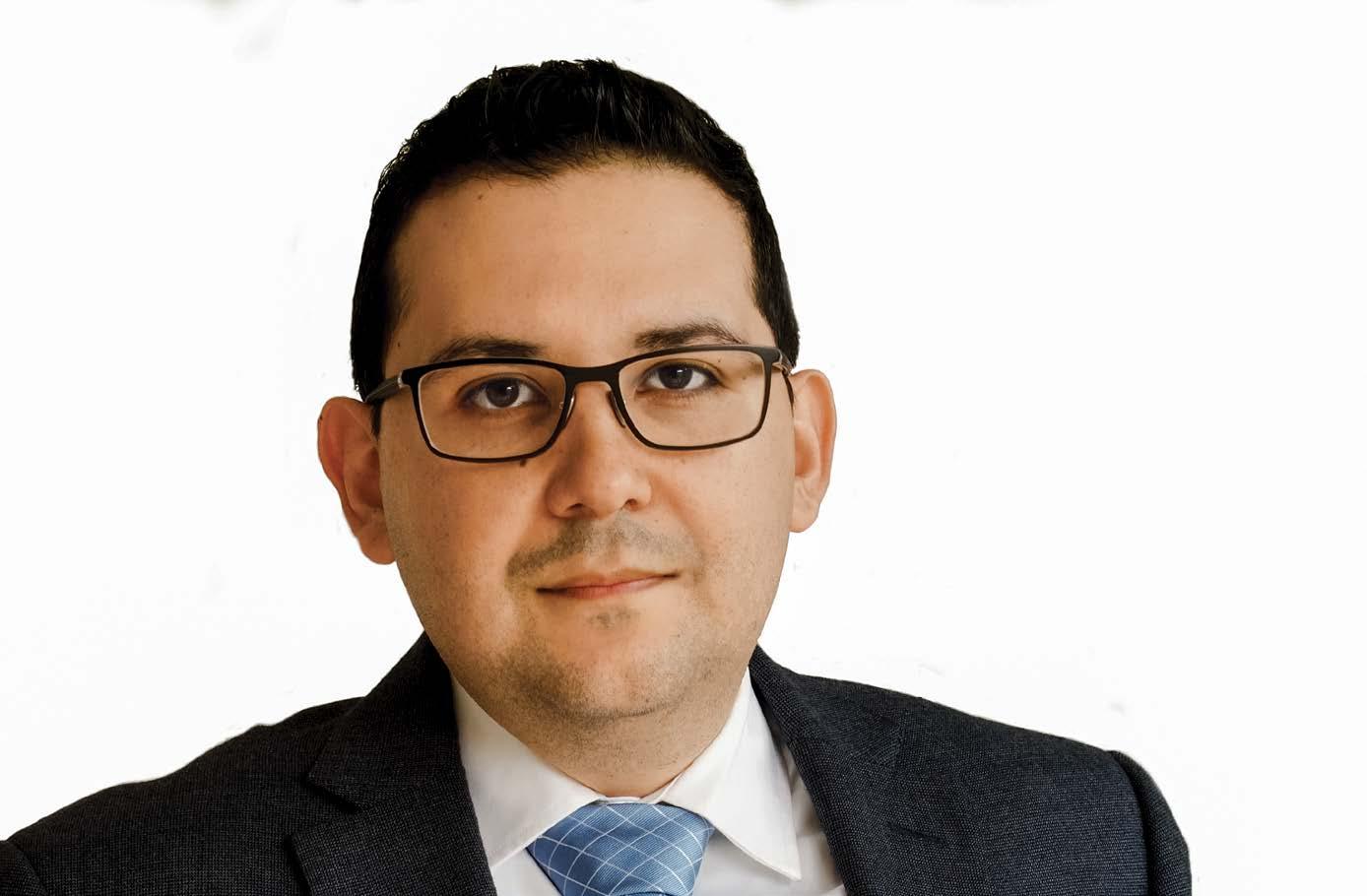
We are in a dizzying environment where, at a global level, the need for efficient, economical and sustainable transport is becoming increasingly essential. Governments and companies have developed a kind of alliance where the objective, particularly for large cities and their constantly growing population, is to have a mobility system that guarantees the proper use of time and the maximization of communication routes.
It is here where the challenge becomes even more aggressive. As communication routes, mostly of a terrestrial nature, increasingly collapse and as the population density of cities grows by leaps and bounds, both the means of transport and the aforementioned communication routes are already insufficient. The medium-height air space — and the concept of “urban air mobility” — is a potential solution to transport the population.
The global urban air mobility market is projected to grow from US$3.01 billion in 2021 to US$8.91 billion by 2028 at a CAGR of 16.77% in the 2021-2028 period. Urban air mobility has the potential to develop a transportation system that is faster, cleaner, safer, and more interconnected. Autonomous aerial vehicles are no longer science fiction as projects and tests are underway worldwide. The UAM (Unmanned Aerial Vehicles) sector, which is still in its early phases, has seen significant growth, with over US$1 billion invested in the first few months of 2020, most notably by Toyota and Guangzhou EHang Intelligent Technology Co. A variety of media have reported that the Federal Aviation Administration (FAA) is working with more than 15 eVOLT (electric vertical takeoff and landing) aircraft manufacturers. Within the next three to five years, various manufacturers around the world plan to begin commercial passenger operations.
Globally, rising traffic congestion is driving the demand for speedier intra city transportation choices. This is likely to increase the focus on aerial vehicle technology development and R&D investment, with several startups and aerospace companies considering it a high-growth market. As a result, such factors are projected to fuel the sector’s growth over the forecast period.
Urban air mobility saw a setback when the COVID-19 outbreak damaged this market significantly. However, the benefits of this technology remain. These include significant time savings as UAMs represent a safe and efficient air transportation system where passenger-carrying air taxis can operate faster and can do sharp turns easily. Furthermore, UAM air taxis are mostly electric or fuel-cell powered. As a result, they contribute to the reduction of pollution in the atmosphere.
The use of autonomous drones in urban air mobility is intended to provide benefits such as lower pollution, shorter travel times, and decreasing demand on current transportation infrastructure. UAM is expected to deliver the ultimate solution to these environmental challenges and overcome the drawbacks associated with ground vehicles. A battery-powered UAM vehicle will replace existing internal combustion engine cars, reducing carbon emissions and improving air quality in metropolitan areas.
Like other disruptive technologies, UAM has yet to reach a stage where innovation is not hindered, and the public is sufficiently safeguarded by federal, state and local governments.

The global aeronautical industry finds itself in a moment of profound transformation, one so radical that it could make the big giants of the sector disappear, or at the very least, make them lose relevance in the market if they do not rise to meet the circumstances of the 21st century. At this very juncture, it becomes mandatory for the leading companies in the sector to invest at a forced march in leading technological change.
One of the principal challenges of technological transformation is the transition toward a propulsion model that will allow the sector to achieve the goal of zero emissions, since, in addition to the declared conviction of industry leaders, it is foreseeable that in the medium term this will become a mandatory standard for national and international aviation, making it one of the most important challenges for companies within the sector globally. For this reason, those who are unable to resolve the technological transformation in due time could be left out of large markets, especially in commercial aviation. It is this fast-paced race to achieve emissions reductions that I call “The Big Race.”
Some of the industry’s main players have set dates as ambitious as the year 2050 to achieve the goal of zero emissions, along with highly structured programs that have been launched by companies to achieve these goals. The main commitments the industry has outlined to reach the established goals are the use of Sustainable Aviation Fuels (SAF), aviation electrification and the transition toward hydrogen-based propulsion. All of these alternatives have advanced considerably in their basic and applied science research, where there are even functional prototypes; however, there are still a vast number of unknowns that need to be solved.
SAFs have the enormous challenge of solving the use of land and water resources for their primary production and the possible impact on the production prices of certain foodstuffs, since their production should definitely not be a threat to food security; hence, SAF production models and the compensatory measures that could arise due to the generation of these fuels must be clearly established. It is also important to improve infrastructure for production, supply and storage at points of consumption.
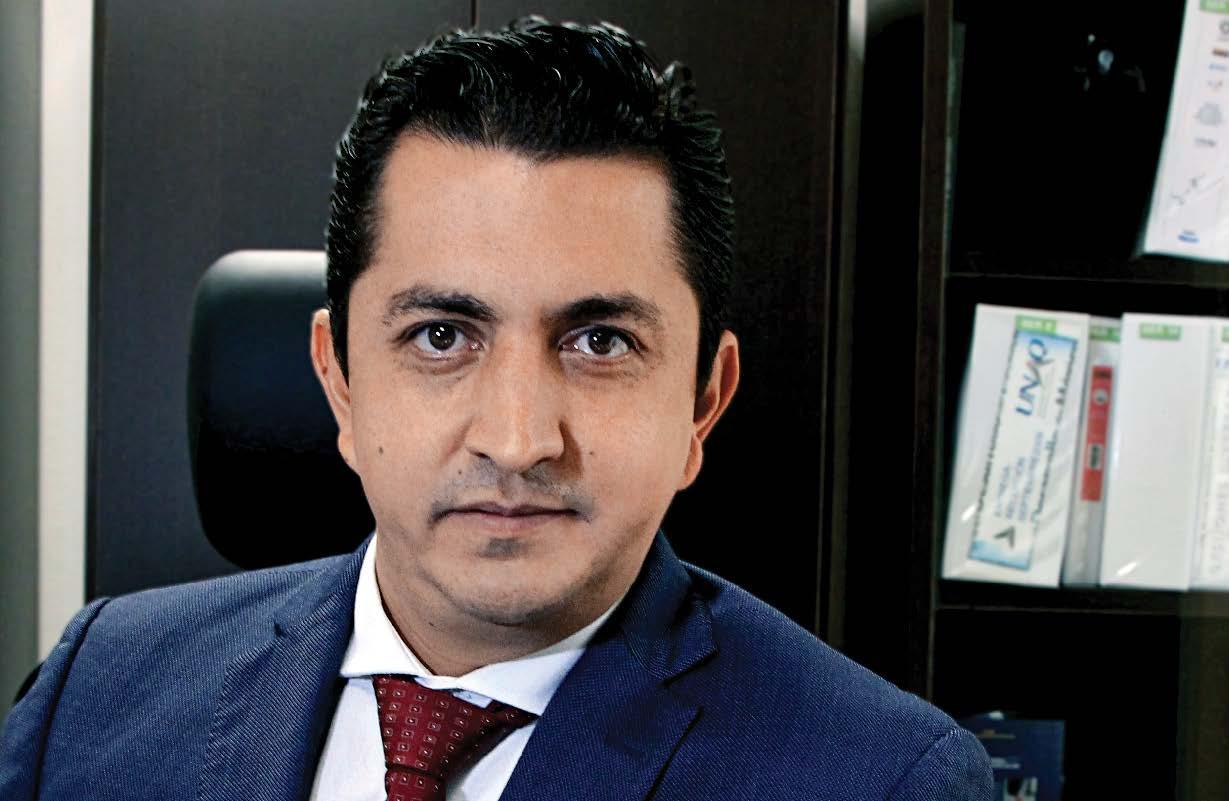
Regarding the challenges of hydrogen, the unknowns are even greater. Although there are functional prototypes at the moment, its economic viability for commercial aviation is not yet clear as a function of the volume and weight of the fuel. Additionally, it is also unclear how a hydrogen propulsion system will coexist with the rest of the aircraft components.
Another important challenge is the design, implementation and certification of all the service infrastructure that will be required for hydrogen’s distribution and storage at consumption sites, such as specialized cargo ships that do not exist today, pipelines, adaptations to airport systems and airfields. These processes could delay the entry of large-scale hydrogen into the market for decades.
“The Big Race” to achieve zero emissions will decide who will be the leaders in our aeronautical industry. The decisions made by large companies will project them into the future or condemn them to the fate suffered by other giants, such as KODAK or Blockbuster, that did not know how to adapt to new technological environments in due time.
During the first part of the 20th century, Mexico invested in aeronautical technology development to the grade of producing innovative airplanes, engines and propellers. These efforts were supported mainly by the Mexican Air Force. Unfortunately, due to disagreements with the US, they all had to be canceled.
In the second part of the 20th century, some private initiatives to manufacture airplanes showed scarce results. Behind almost all these failures were financial issues, and it was clear that there was no real interest from government institutions to support those efforts.
In the 21st century, Mexico, through NAFTA and other commercial agreements, made itself an attractive investment destination for the aerospace industry. New import/export rules to facilitate international trade, dedicated industrial parks, and the development of specialized professionals and clusters were the keys.
There is no doubt that it has been a successful program. The sector has attracted a great deal of investment, created jobs for a specialized workforce, helped to develop large areas of the country, particularly the central and northern regions, and placed Mexico among the top aerospace producers worldwide.
Aerospace companies in Mexico manufacture everything from simple O-rings to complex and extended parts, and the sector continues to grow based on good quality, low cost and logistic advantages, but what about technology development?

In aerospace, it is well known that innovation and certifications are the main drivers for the value of a product. In this industry, market price is not proportional to the cost of manufacturing, but to the design and certification processes required.
Unfortunately, most companies coming to Mexico to produce parts for the aerospace industry keep their research, development and innovation at home, limiting Mexico’s ability to grow in these areas. Other countries that receive these investments apply conditions to force knowledge sharing.
Also, there is almost zero intention to certify products in Mexico to add value here. This situation condems Mexico to be nothing more than a factory for technology developers. As a consequence, our best brains are forced to emigrate to look for opportunities to create and innovate.
Nevertheless, there are a few Mexican companies determined to design and manufacture innovative products with Mexican professionals, aeronautical engineers, technicians and pilots and to develop local providers. Good examples are Horizontec and Oaxaca Aerospace.
Horizontec and Oaxaca Aerospace are small aircraft manufacturers that started with limited private investment but that are committed to technological development in the aeronautical sector in Mexico. They have had to overcome many obstacles but their leaders have not given up.
From my viewpoint, regulations are the bigger hurdle for these companies looking for certification of their products in Mexico. The country’s regulations were not prepared in a practical way. Mexican rules for aerospace activity did not exist until a few years ago.
Additionally, the Mexican regulator for aviation and aerospace is struggling with a lack of resources, which is one of the reasons why Mexico’s airspace was downgraded by the US Federal Aviation Administration (FAA) from Category 1 to Category 2. Due to these problems, the Mexican authority (AFAC) can barely help Mexican companies that want to certify products.
It is important for Mexico to attract investment in the aerospace industry and efforts must continue because the sector represents growth r for regions. To this end, the south of the country needs to make itself attractive for such investments and catch up to the most developed areas, but Mexico needs more than that.
A written commitment from new players investing in Mexico is needed to potentiate R&D and innovation locally so that Mexico can become not just a manufacturer, but also a developer. India and Brazil are good examples of this successful strategy.
Government institutions like the Mexican Air Force need to believe in Mexican products and commit to supporting civil efforts to prevent those new players like Horizontec or Oaxaca Aerospace from failing due to a lack of resources.
AFAC regulations require a general review to make it easier and practical to develop in Mexico. The role of this authority is key to driving growth, so the agency needs enough human and material resources, more than just what is required to recover Mexico’s Category 1 standing with the FAA.
As citizens and customers, we all can contribute to a successful Mexican aerospace industry that not only manufactures but also creates. We must stop thinking that all foreign products are better than those made in Mexico or that we do not have the capabilities to compete worldwide.
Mexico is ready to start competing with the big players in aeronautical technology development. It has demonstrated itself to be capable, has the required professionals, has good experience, has developed excellent research centers and is eager to do so. The sector just needs government commitment and support.
There is nothing in any agreement that prevents Mexico from manufacturing its own products for the aerospace industry; the conditions to join the international developers club are there. Success will place Mexico among those countries that drive technology, not just simple users.
Finally, it is important to look inward as citizens and customers and ask if we are also placing limits on ourselves. Do we really trust Mexican companies? How committed are we to supporting Mexican companies? Do we tend to criticize instead of providing encouragement?
We need to reflect and ask these same questions in relation to all industries in Mexico.
Q: What is the impact that Arajet expects to have within the Latin American aerospace ecosystem?
A: We seek to develop our network of 54 destinations and mobilize about 7 million passengers per year, bringing an accessible product to the heart of Latin America. In Santo Domingo, the penetration of low-cost flights is around 3%. This is very low and an airline like Arajet is necessary to promote the democratization of aviation. Air travel should not be just for people who have a lot of money; traveling by plane should be a right for everyone.
On Aug. 8, 2022, we launched a promotional campaign on the arajet.com portal touting US$149 tickets sold out in 48 hours. Since then, sales have continued to increase. We have clients from the Dominican Republic, Mexico, Guatemala, San Salvador, San Jose, Costa Rica, Barranquilla, Cali, Cartagena, Medellin, Bogota, Lima, Quito, Guayaquil, Aruba, Curacao, Saint Martin and Jamaica.
Q: What are the main challenges and opportunities of starting commercial operations during the post-pandemic era?
A: Every time there is a great crisis, there are great opportunities. Arajet was able to take advantage of these opportunities thanks to its entrepreneurial nature. During the pandemic, the industry was depressed and we were able to take advantage and receive capitalization through Bain Capital, the largest fund in Massachusetts. Using these funds, we entered the industry, bought and leased airplanes, and signed contracts for parts. Many in the industry had lost their jobs due to the pandemic and we were able to recruit them from different parts of the world. The pandemic allowed us to put together all the pieces of an airline. Due to the industry’s competitiveness, this challenge would have been harder if the pandemic had not occurred.

Q: What have been the challenges that Arajet has faced while recruiting its workforce?
A: We apply best practices and have hired those who worked in airlines based in the EU, North America, Mexico and South America. We were able to attract talented vice presidents and directors who worked in the best low-cost airlines in the world. We also included Dominican talent with aeronautical knowledge. This is the first time for the Dominican Republic to have an airline in this category and we had to work closely with the Dominican government on fiscal, legislative, and regulatory issues. That is why this project took almost 10 years to realize.
Q: What is Arajet’s approach to modernization and sustainability?
A: We operate the most modern aircraft in our category, which is the Boeing 737 Max 8. These aircraft are new and modern, producing almost 70% less noise than those used by our competitors. The 737 Max 8 uses 14% less fuel and emits about 20% less carbon dioxide than others.
Boeing is our strategic partner in the Dominican Republic and it supports us through technical and flight maintenance. With this team, we have the opportunity to promote tourism that respects the environment. Our five aircraft are named after natural protected areas in the Dominican Republic. Arajet’s name has similar origins, as it is how Taino Indians called the macaw birds and we wanted our brand to be identified with the natural world.
Víctor PachecoQ: What have been Lufthansa’s main strategies regarding sustainability in Mexico and Latin America?
A: As we move away from the global pandemic, we are trying to reconnect with our customers in Mexico and Latin America through new operations in Cancun, a key destination for Lufthansa, and with flights from Rio to Munich. After a twoyear pause, we restored flights to Panama through our leisure airline Eurowings.
Sustainability is also essential for us. Lufthansa Group has a great responsibility to the planet, which we honor by reducing our carbon footprint as much as possible. Until 2024, Lufthansa Group will be investing US$250 million in sustainable aviation fuels (SAF). We are the largest consumer of SAF in the EU and the secondlargest worldwide.
Regarding land operations, we are using e-cars and implementing other strategies that will decrease our carbon footprint and support environmental responsibility. We are implementing fully carbon-neutral freight operations to Shanghai. In December 2020, Lufthansa Cargo also became the first airline to implement a carbon-neutral freight flight.
We are also investing in Power-to-Liquid technology. During the next five years, we plan to purchase 25,000L of Power-to-Liquid fuel and use 50,000 tons of SAF per year to transport more than 500,000 passengers. We truly believe that this is the future but we are not doing this alone. We need partners that believe in our mission, so we are collaborating with Porsche in Chile and with Siemens in Abu Dhabi, among other alliances.
Q: What strategy is Lufthansa Group implementing to be CO2 neutral on the ground in its home market by 2030?
A: During the pandemic, we decided to remove older equipment to transform our fleet. By 2025, we will be ordering 120 high-tech aircraft. By 2030, we will have incorporated a total of 180 new aircraft, helping us cut our carbon footprint by 15%. These aircraft include the Boeing 787, Airbus 350 and the smaller Airbus 320. We are replacing old aircraft and every week we are receiving new aircraft, a quite impressive feat in a time when we are recovering from the consequences of a pandemic.
Q: How has the relationship between Lufthansa and Mexico developed as a result of the pandemic?
A: Despite dramatically reducing operations during March 2020, our flights to Mexico recovered quickly. Outside of repatriation flights, our first flight back to Mexico took place on June 4, 2020. Last year, we introduced seasonal flights from Munich and Frankfurt to Mexico City and we fly thrice per week to Vienna and Turin. We also have 50 weekly flights to Cancun, which is much higher than what we flew in the pandemic. Mexico is recovering fast in comparison to other markets in the world.
Our commitment to the Mexican market has never been stronger. We have a long history with Mexico which makes us particularly proud. Lufthansa has played an important role in boosting the relationship between Germany and Mexico. Especially in times of crisis, we have always shown our commitment and support for Mexico.
 Alejandro Arias
Alejandro Arias
Q: What projects will expand your operations in Mexico even further?
A: We are launching a Mastercard credit card as a result of the cooperation between Mastercard and Banca Mifel. This card will make it easier to travel and provide several advantages to Mexican travelers, enhancing their travel experience. We are always looking for expansion opportunities.
Q: How has the logistics side of Lufthansa developed in this new world context?
A: The cargo world changed during the pandemic. While the pandemic affected passenger flights, cargo demand increased because it was needed to transport medical or testing equipment and other medical devices. We resumed operations in Mexico rapidly but not only because passengers started to fly; cargo helped us to maintain our services in the market. We gained a greater appreciation of cargo as a result of the pandemic.
Q: How does Lufthansa plan to promote travel in Latin America to help reactivate the tourism sector?
A: Latin America is one of the most important regions for Lufthansa Group and we work with local authorities and boards to promote our new routes. The region is highly popular in the EU and we hope Latin America recovers fully. Summer bookings look promising. People are really hungry to fly again and discover this beautiful part of the world.
We offer over 500 weekly flights from the Americas to Frankfurt, Munich, Zurich, Vienna and Brussels, our four main hubs in the EU. This shows that the Americas are back and recovering. We are starting with the summer schedule and are adding new destinations. We now fly to more destinations than before the pandemic as we try to diversify our offer and connect more people from the EU to the Americas.
Our core objective is to connect people, culture and economies in a sustainable way. For this summer, we will be able to do more with all the connectivity that we are offering.
Q: How has air traffic in the Americas been impacted by the conflict in Ukraine?
A: The situation in Ukraine is very sad and our sympathy is with our colleagues and the Ukrainian people. We do not know in which direction this is heading. Our prayers are with them. The Lufthansa Group has been impacted by this situation. When the conflict started, we decided to stop flights to and over Russia and Ukraine. Those flights that need to cross to Russia are taking more time and cost more but this is something that we had to do to respect the sanctions imposed on Russia.
Q: What opportunities or challenges do you see in the Mexican airspace as Felipe Ángeles International Airport ramps up its operations?
A: We are a network airline so connectivity is essential. For example, Panama is not only a destination, it is a point of connection to other cities. We are always looking for hubs with this possibility because not every destination can afford a direct flight.

Q: How can Lerta IT provide solutions to enrich and grow the Mexican aerospace industry?
A: Lerta IT is a Mexican-born company with a global presence and Latin American DNA. We want to make a difference in the aerospace industry, regardless of global macroeconomics. Lerta IT works with the Mexican Federation of the Aerospace Industry (FEMIA), the Mexican Aerospace Fair (FAMEX) and other associations to strengthen the sector. We seek to contribute to the Mexican aerospace industry with our solutions, knowledge and experience and we are actively recruiting clients who want to share investment and become flagship success cases.
Lerta IT can leverage its experience in other fields, such as finance, to help the aerospace sector. We have developed security solutions alongside several fintechs and can use similar codes to guarantee security across the aerospace industry. These tools can help Mexico recover its Category 1 for aeronautical safety standards.
Q: What kind of aerospace companies could benefit from Lerta IT’s services?
A: Lerta IT covers the entire aerospace industry. For instance, we developed an MRO system for Mexicana MRO. Our MRO systems include flight planning, maintenance and other specific cases. Unfortunately, the Mexican aerospace industry is not looking for much innovation, tech development or optimization. Decisionmakers must realize the importance of technology. It has been difficult to enter the aerospace sector but we provide solutions for several other industries at competitive prices. For example, we provide maintenance services to all of FEMSA’s plants.
Q: What are the main challenges for aerospace suppliers wanting to modernize their operations and move to Industry 4.0?
A: The aerospace industry is a long way from achieving the modernization it requires because it is still seen as a fad. Investing in automation and Industry 4.0 without a correct assessment of the company’s situation is a serious mistake. Evaluation and good planning are crucial for a successful transformation. In addition, the aerospace industry is always operating; there is no time for changes within companies. The pandemic and the ensuing disruptions did not help the transformation as companies had to focus on staying afloat.
Q: How does Lerta IT work with clients to evaluate their current situation and offer tailor-made solutions?
A: First, we sign an NDA with the client so they feel confident about working with us. Usually, Lerta IT sends three specialists. One is focused on evaluating technology, the other evaluates processes and the third is a business architect who will take photos to evaluate how the company is doing in its operations. Lerta IT lives with the client for a week, measuring and evaluating. The following week, we work on proposals to present to the client and later we present a transformation roadmap with detailed investment plans.
Instead of offering a high-cost, seemingly fast solution, we put together a realistic quote that includes moderate investment and time. Transformation and structural change usually take time. The cultural change toward tech is a complex process that can directly affect companies that lack a solid plan.
Óscar Wenceslao CEO | Lerta ITQ: How is Honeywell Aerospace shaping the future of flight?
A: Honeywell Aerospace’s solutions are virtually found in every commercial and defense aircraft in the world. The company develops several products, from aircraft engines and auxiliary power units to cockpit avionics,cabin electronics, mechanical systems and connected solutions, among others.
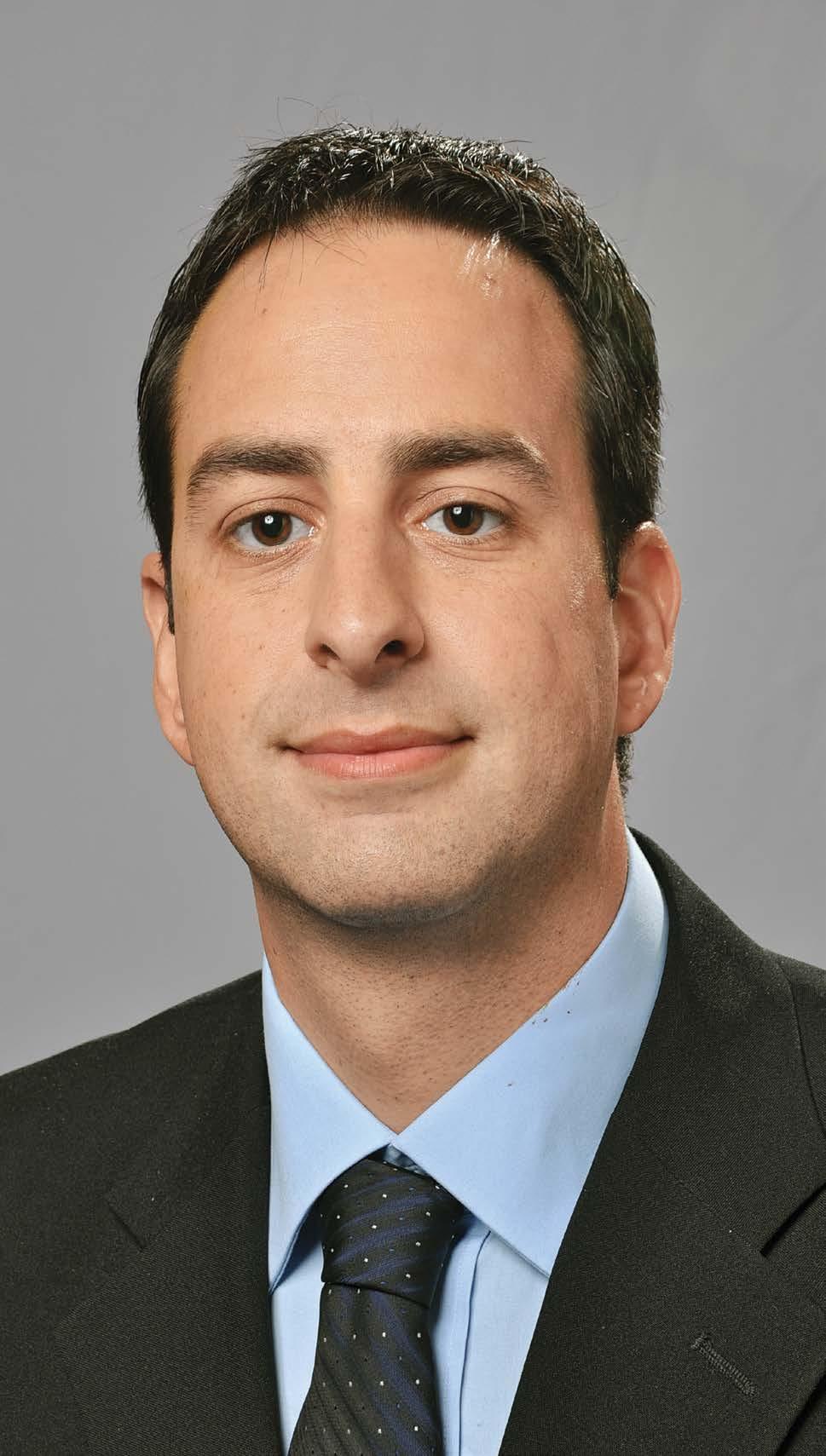
Our innovations lead to more efficient aircraft, lower maintenance costs, improved flight planning and traffic management and, eventually, more efficient airports and sustainable flights. Honeywell provides customers with an extensive technical support network. We have a comprehensive presence in the market and the company is also pushing further innovation, such as unmanned aerial vehicles (UAV) and autonomous flight.
Q: How do Honeywell’s solutions help airlines to maximize fleet safety and optimize operational efficiency?
A: Honeywell provides airlines and cargo operators with solutions for flight efficiency. We base our solutions on data analytics to support customers with precise data that helps them reduce fuel consumption, lower carbon emissions, and make intelligent maintenance decisions to keep their fleets operating. Connected and predictive maintenance plays an increasingly important role within today’s aviation industry. Our connectivity solutions help our customers to improve their operations, and to remain profitable and competitive in a challenging market. More than 3,000 aircraft use Honeywell Forge Flight Efficiency globally.
Q: How is Honeywell innovating to move urban transportation from the road to the air?
A: Urban air mobility (UAM) remains a large challenge, but Honeywell Aerospace is fully on board and innovating to make it a reality. On top of the existing platforms, Honeywell is investing to develop new technologies for this market, which is new for everyone. UAM is a megatrend; while we do not know exactly when it will arrive, we are certain that it will become a reality.
Honeywell is a leading supplier in UAM technology. We already offer a wide range of technologies and solutions to help our customers to generate more sustainable aviation.. In addition, Honeywell has established strategic partnerships -to develop electric and hybrid-electric propulsion systems. Electrification will play an essential role in UAM, from propulsion systems to the entire aircraft. Finally, safety will play another key role in the success of electric and autonomous flight.
Q: How is Honeywell Aerospace leading the industry’s path to carbon neutrality?
A: Honeywell invests heavily in sustainable solutions. The aviation industry has pledged to be carbon neutral by 2050. Honeywell will be carbon neutral by 2035. This is not just a commitment; it is a robust plan to achieve carbon neutrality 15 years before the industry does. Sustainability will remain among our key strategies for the coming years.
Hybrid-Electric Power: Future of the Aerospace Industry

08/03/2023
Airline Industry Must Invest in New Technologies: OAG
06/03/2023
FAA Approves Universal Avionics’ Visual Data Management Solution
28/02/2023
GAP to Raise MX$4.5 billion Sustainability Bond
09/02/2023
GAP to Invest Over MX$10 Billion in 2023
24/01/2023
Industry Stakeholders Launch Sustainable Aviation Fuels Contest
23/01/2023
Mexico, Uruguay Launch Satellite Infrastructure Alliance
06/12/2022
Zacatecas to Boost Space Telecommunications with New Tech
05/12/2022
Delta, Aero Design Labs to Develop Tech to Reduce Emissions
23/11/2022
Mexico’s Air Operations Will Be Unaffected by 5G Technology
15/11/2022
AEM Mexican Space Agency
AIC Cancun International Airport
AICM Mexico City International Airport
AIQ Queretaro Intercontinental Airport
AIT Toluca International Airport
ALTA Latin America and Caribbean Air Transport Association
ASA Airports and Auxiliary Services
ASUR Grupo Aeroportuario del Sureste
BASA Bilateral Aviation Safety Agreement
CANACINTRA National Chamber of the Transformation Industry
CANAERO National Chamber of Air Transport
CENALTEC High Technology Training Center
CENTA National Center of Aerospace Technology
CIDESI Engineering and Industrial Development Center
CIMAV Research Center for Advanced Materials
CINVESTAV Center for Research and Advanced Studies
CONACYT National Council of Science and Technology
CONALEP National Technical Professional College
COPARMEX Mexican Employer Confederation
COPRESON Sonora Council for Economic Promotion
DGAC General Direction of Civil Aviation
ESA European Space Agency
FAA Federal Aviation Administration
FAMEX Mexican Aerospace Fair
FBO Fixed Base Operator
FEMIA Mexican Federation of the Aerospace Industry
FIBRA Mexican Real Estate Investment Trust
GACM Grupo Aeroportuario de la Ciudad de México
GAP Grupo Aeroportuario del Pacífico
IATA International Air Transport Association
ICAO International Civil Aviation Organization
INADEM National Institute of Entrepreneurship
IPN National Polytechnic Institute
IS-BAO International Standard for Business Aircraft Operations
ITESM Monterrey Institute of Technology and Higher Education
MRO Maintenance, Repair and Overhaul
Nadcap (previously NADCAP, National Aerospace and Defense Contractors Accreditation Program)
NAFTA North American Free Trade Agreement
NAICM New Mexico City International Airport
NASA National Aeronautics and Space Administration
OMA Grupo Aeroportuario Centro Norte
SCT Ministry of Communications and Transportation
SEDECO Ministry of Economic Development
SEDENA Ministry of National Defense
SEMAR Navy
TUA Airport Use Tariff
UAV Unmanned Aerial Vehicle
UNAM National Autonomous University of Mexico
UNAQ Queretaro Aeronautic University
UVM Valle de Mexico University
AIFA 6, 8, 13, 14, 16, 17, 18, 19, 49, 53, 54, 71
AIQ 12, 13, 14, 68
Airline, Airport Synergies Lead to Growth 6, 13

ALTA 6, 10, 68, 71
AMBE Engineering 36, 37, 40, 71
Arajet 52, 62, 71
ASESA MRO 23, 30, 71
BJXAerospace 8, 36, 42, 48, 71
Bombardier 23, 25, 29, 33, 37, 43, 71
CANAERO 6, 16, 17, 68, 71
Chihuahua Aerospace Cluster 36, 39, 71
Delastek 23, 29, 71
Element Material Technologies 36, 46, 71
HEMAQ 36, 44, 71
Honeywell 23, 32, 52, 66, 71
HT-MX 7, 36, 38, 45, 71
Innocentro 6, 9, 38, 71
Lerta IT 52, 65, 71
Lufthansa 24, 52, 63, 64, 71
Optimen 8, 36, 48, 71
S&A Aeronautical Consulting Group 6, 11, 52, 60, 71
Safran 23, 28, 37, 43, 71
Sandvik Coromant 23, 26, 27, 71
UNAQ 43, 68
Vazdelar 36, 47, 71
Journalist & Industry Analyst: Sofía Hanna
Senior Journalist & Industry Analyst: Antonio Gozain
Editor: Alicia Arizpe
Editor: José Escobedo
Senior Editor: Mario Di Simine
Managing Editor: Alejandro Salas
Aerospace Industry Lead: Luis Tanaka
Commercial Director: Edoardo Papini
Content Partnership Coordinator: Mariana Rodríguez
Content Partnership Manager: Miguel García
Junior Graphic Designer: Valeria Villanueva
Junior Graphic Designer: Paulina Quiroz
Senior Graphic Designer: Marcela Muñoz
Design Manager: Mónica López
Digital Communication & Multimedia Director: Marcos González
Web Development: Omar Sánchez
Collaborator: Rodrigo Andrade
Director General: Jeroen Posma
© Mexico Business Publications S.A. de C.V., 2023. This annual publication contains material protected under International, US and Mexican Laws, as well as international treaties. Any unauthorized reprint or use of this material is prohibited. No part of this book may be reproduced or transmitted in any form or by any means, electronic or mechanical, including photocopying, recording or by any information storage and retrieval system without express written permission from Mexico Business Publications S.A. de C.V. Mexico Aerospace Review is a registered trademark.
The publisher has made all reasonable efforts to provide accurate information and the information contained in this publication is derived from sources believed to be true and accurate. However, the information in this publication should not be considered to be complete or definitive and may contain inaccuracies or typographical errors. The publisher accepts no responsibility regarding the accuracy of information and use of such information is at your own risk. The publisher will not be liable to any party for any direct, indirect, special or other consequential damages arising from any use of information in this publication. The publisher provides no representations or warranties, express or implied, including any implied warranties of fitness for a particular purpose, merchantability or otherwise in relation to any information provided by the publisher in this publication.